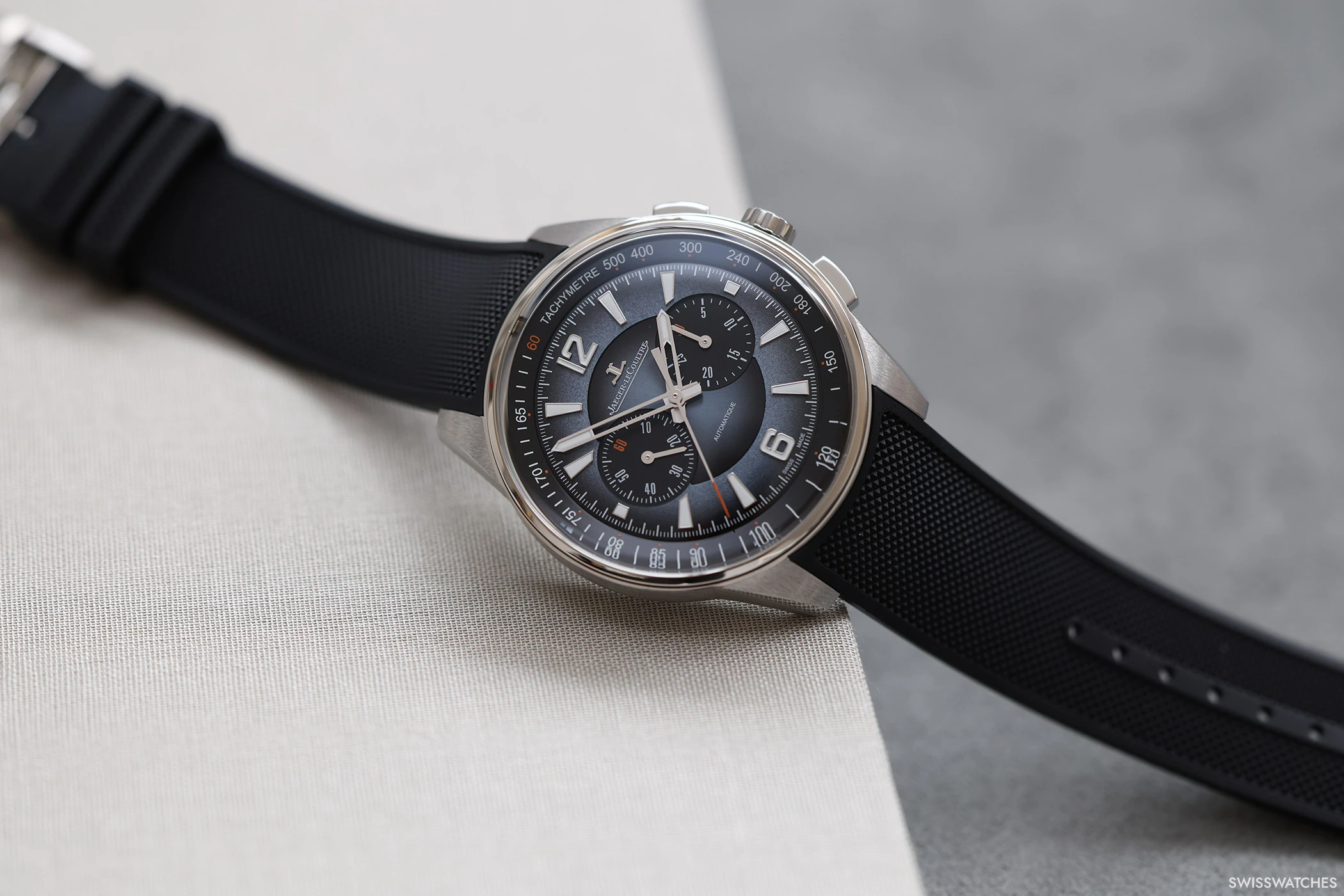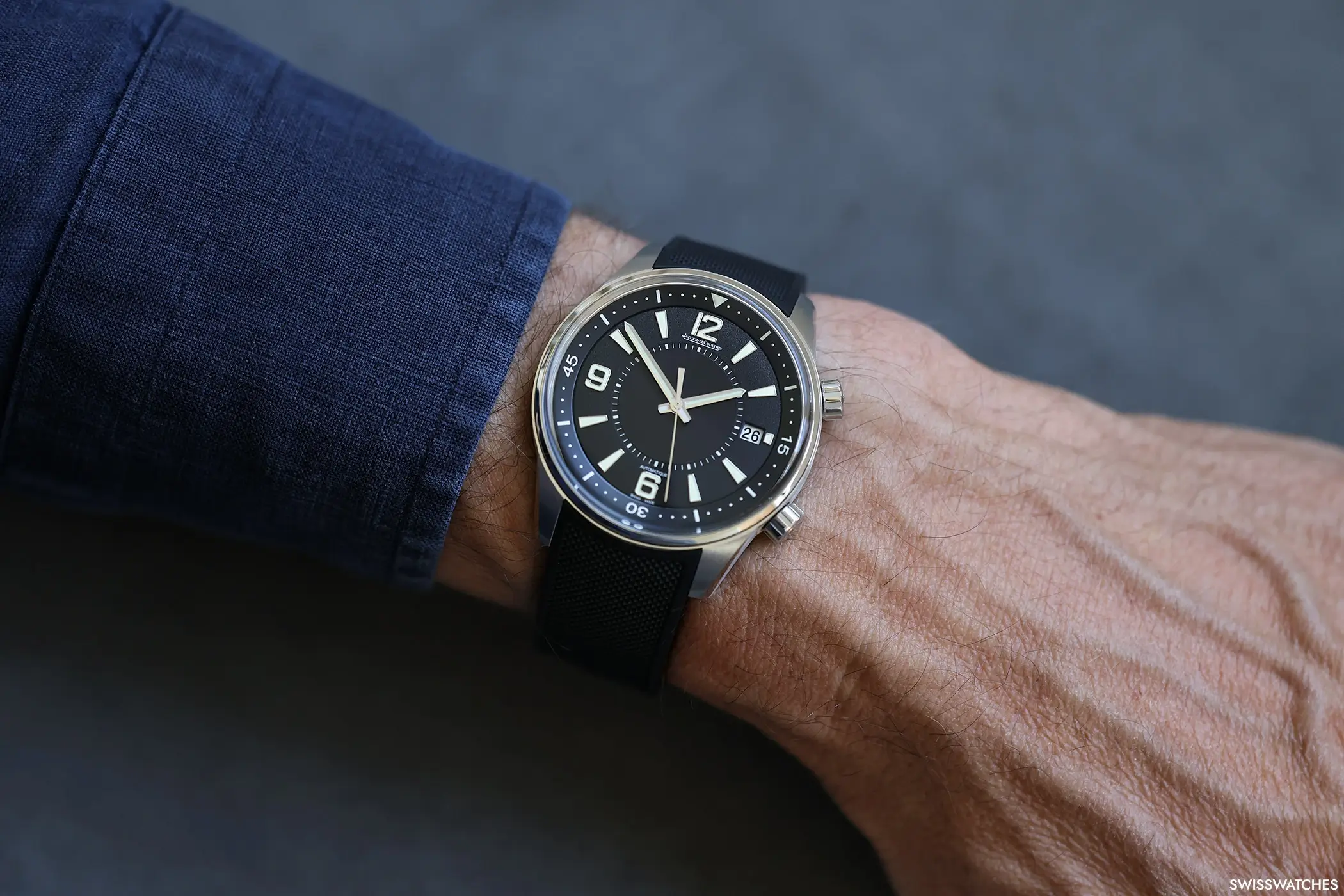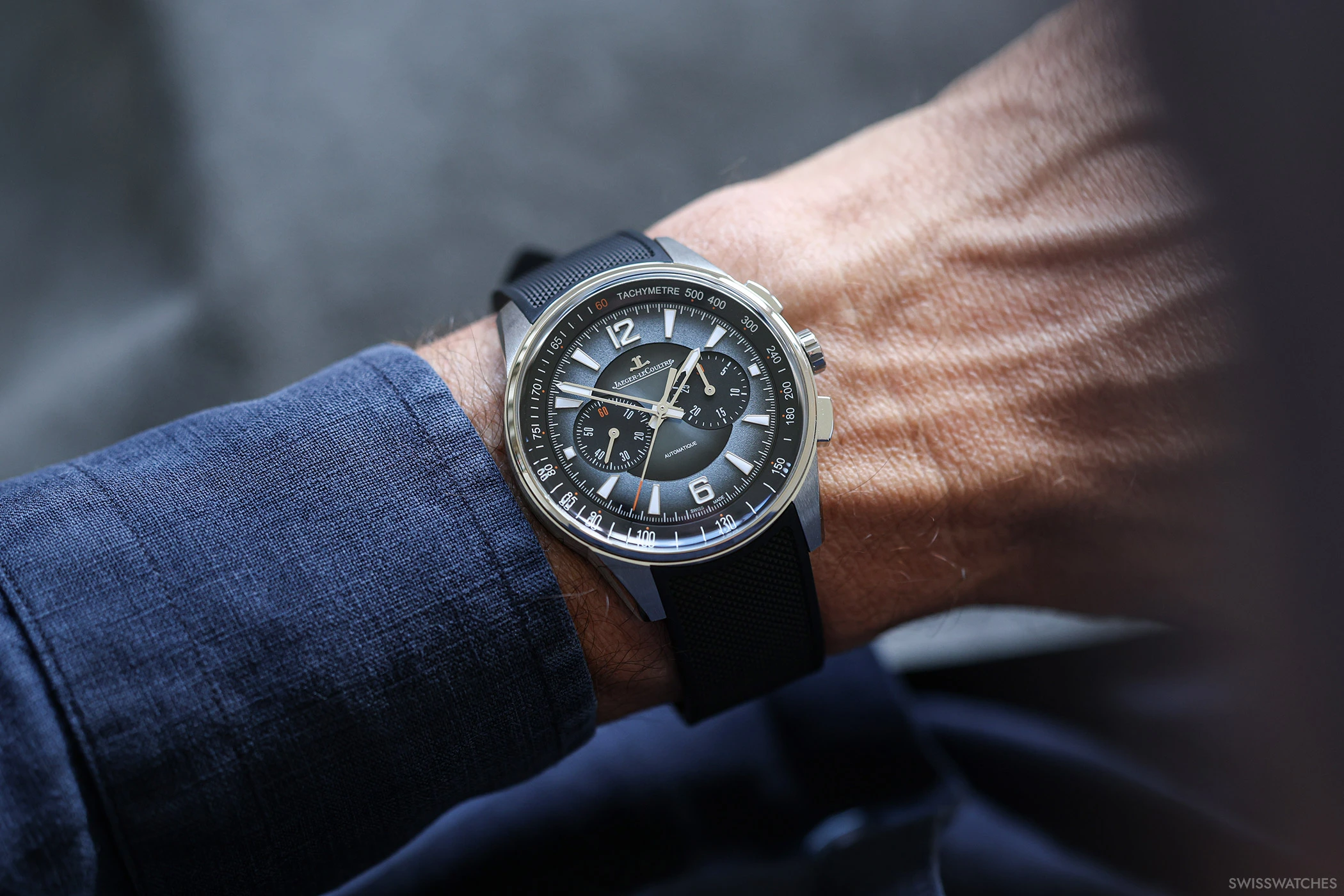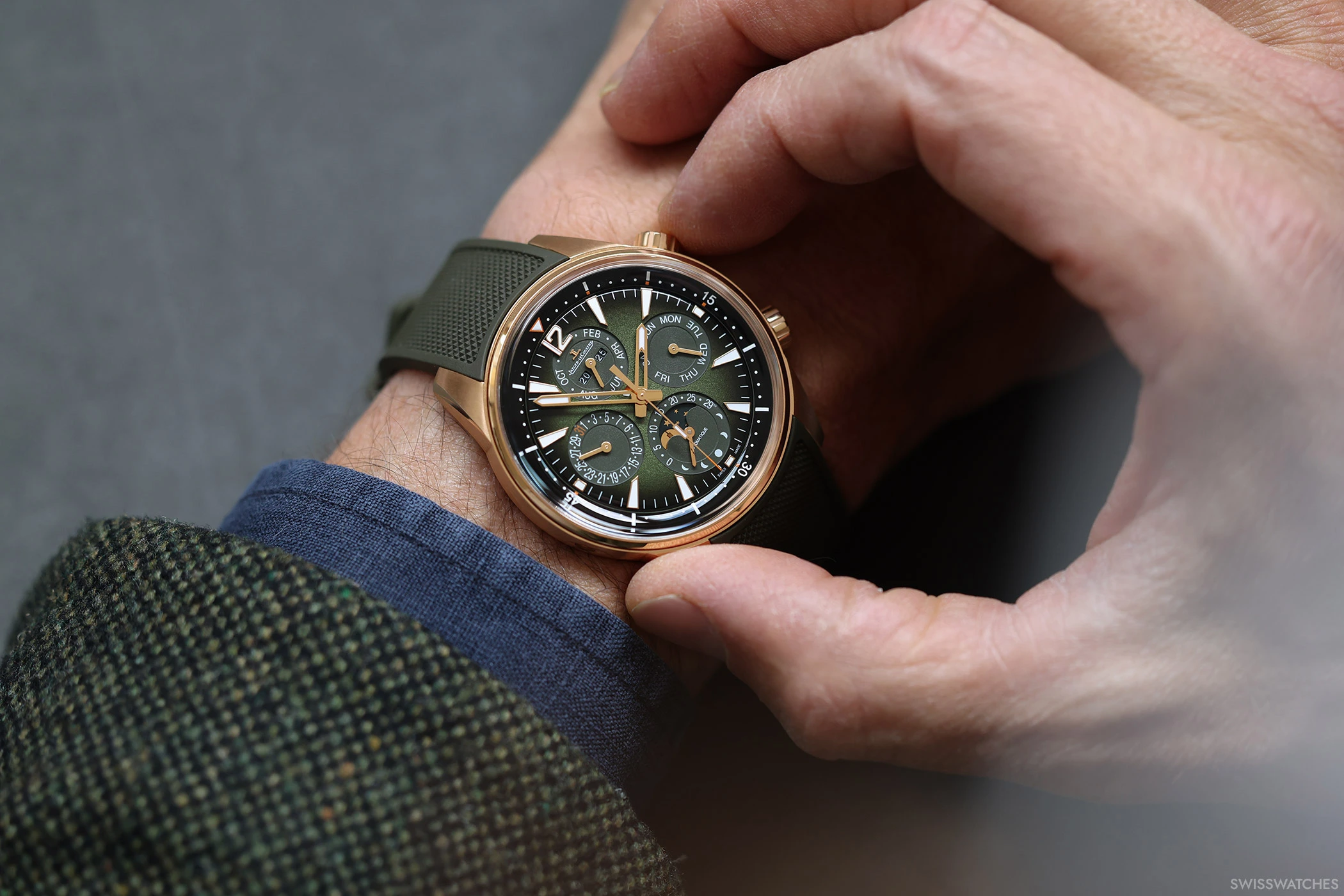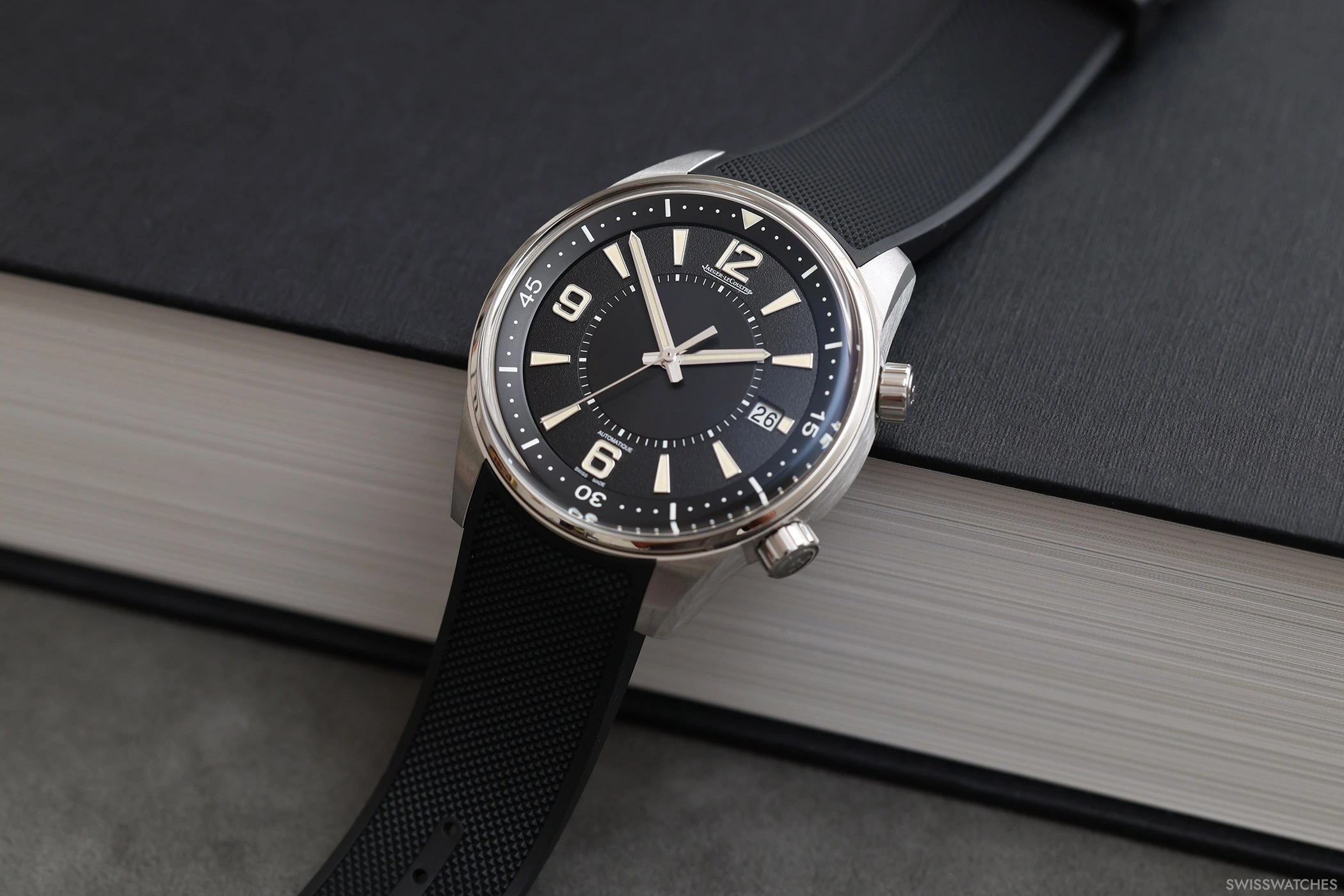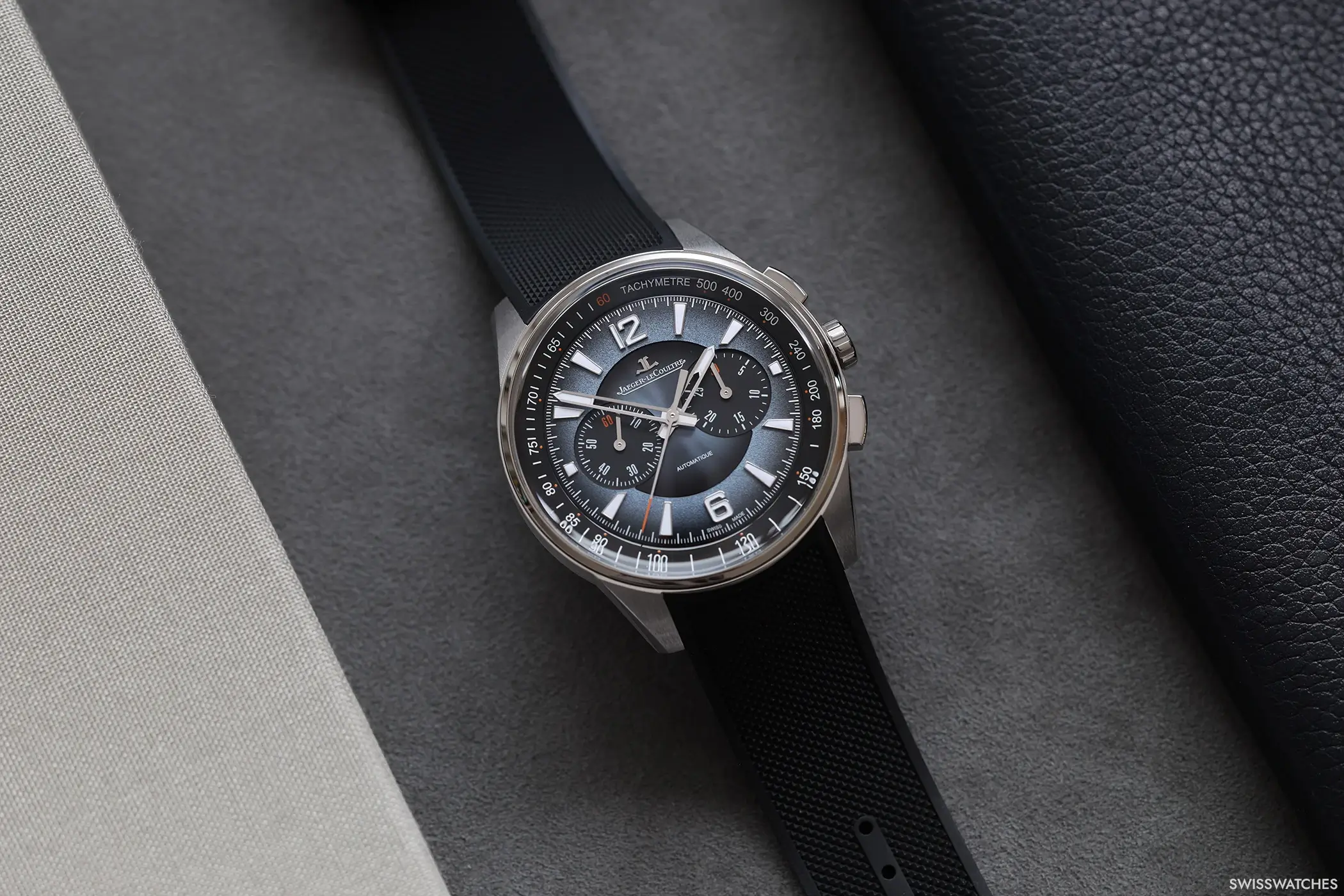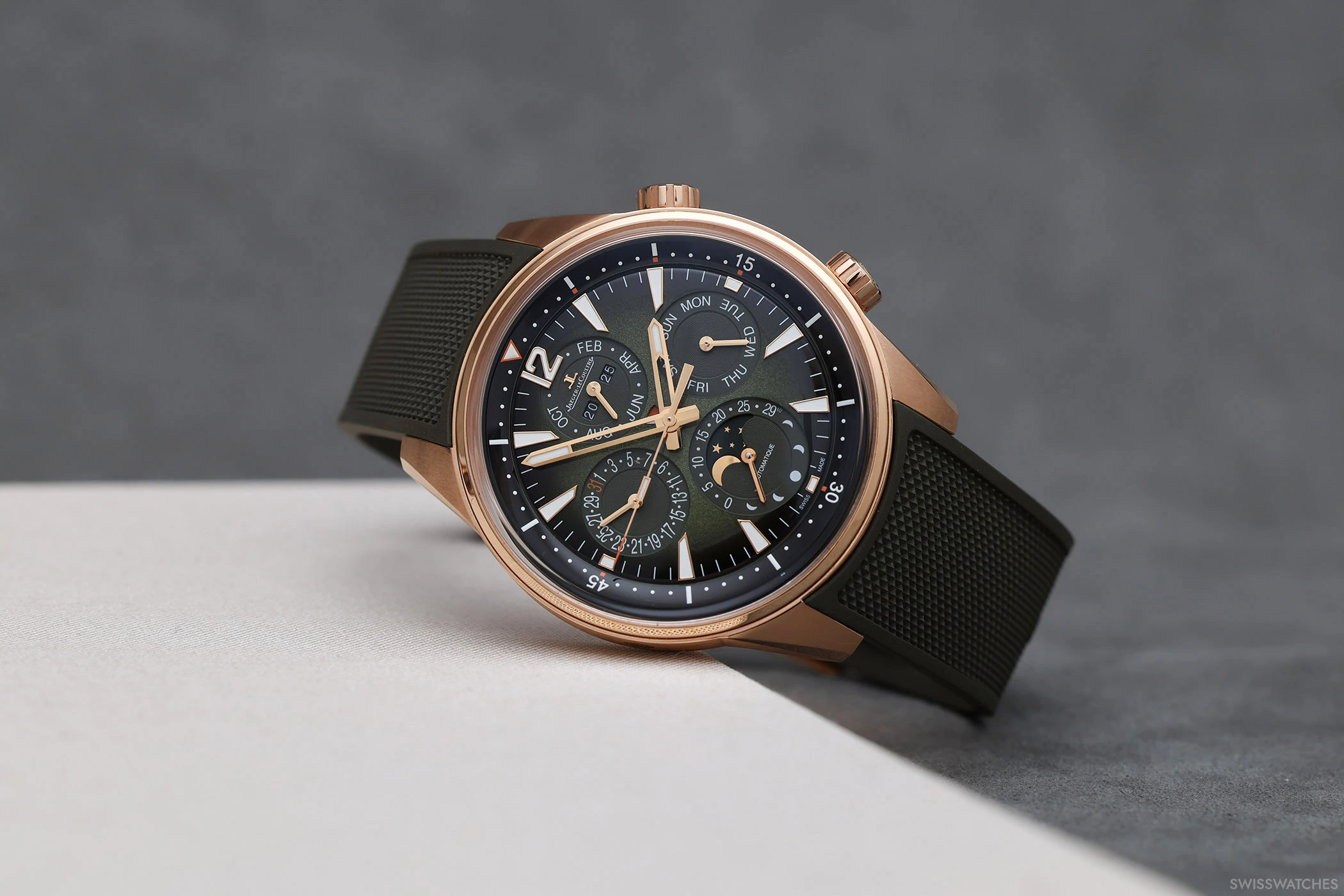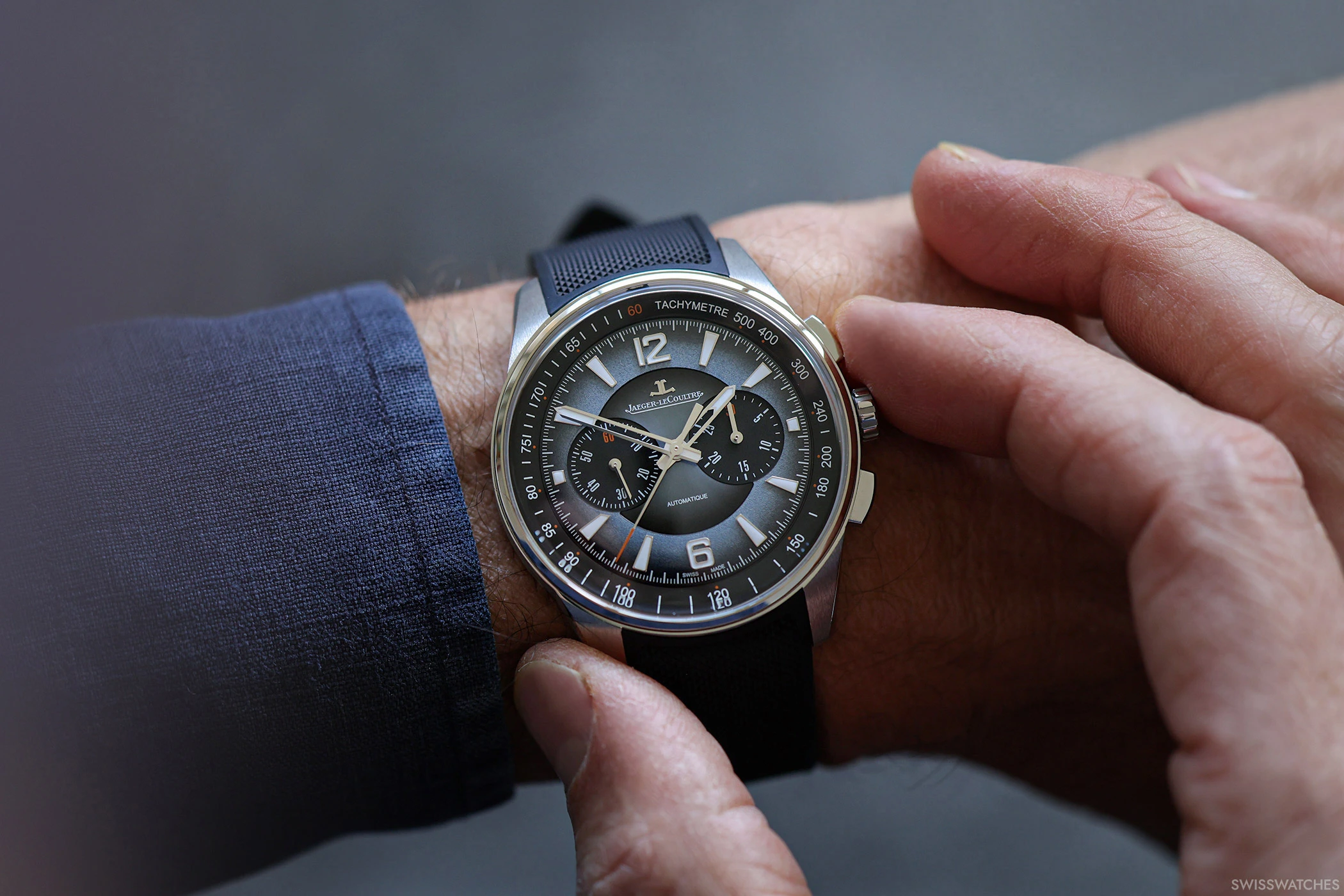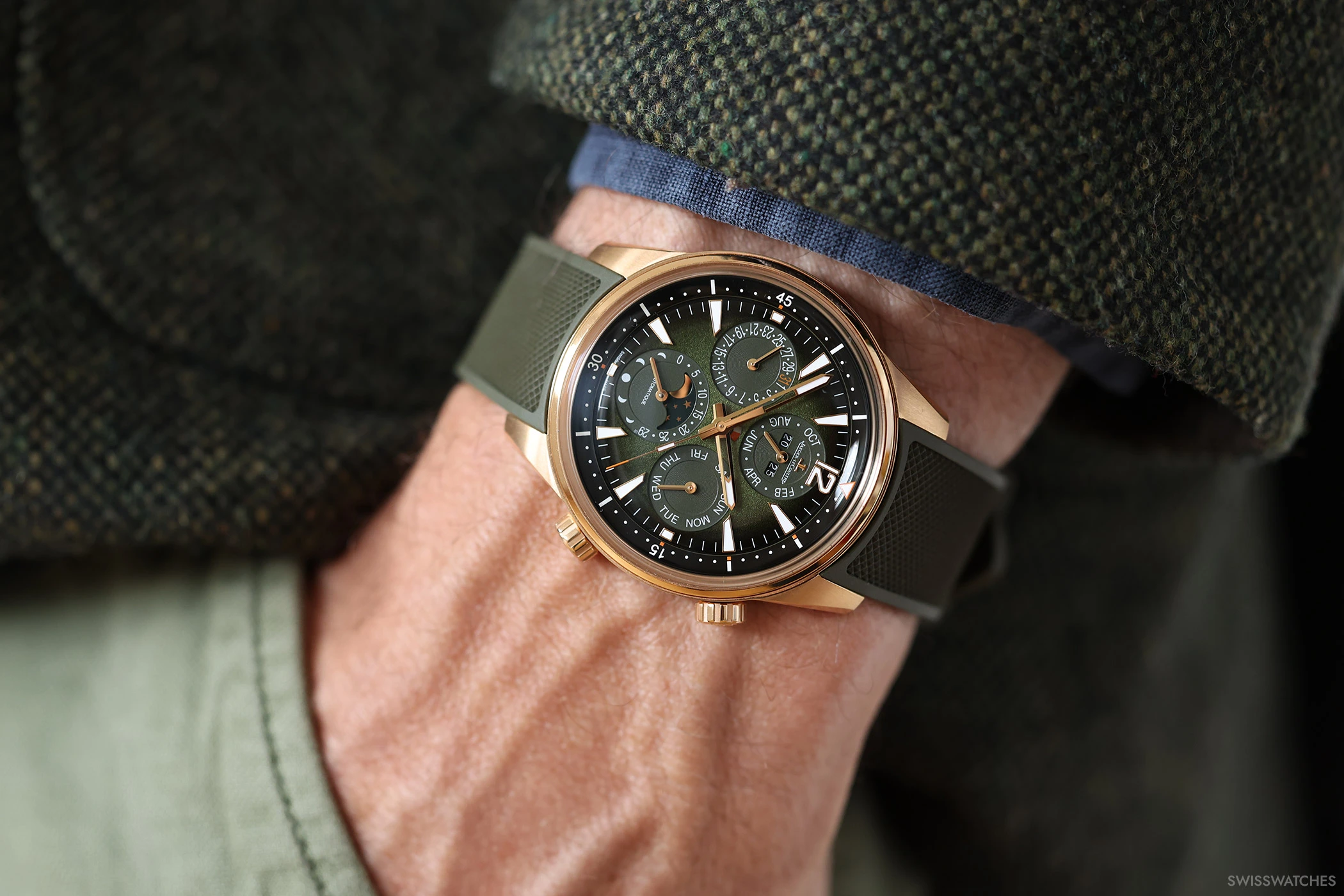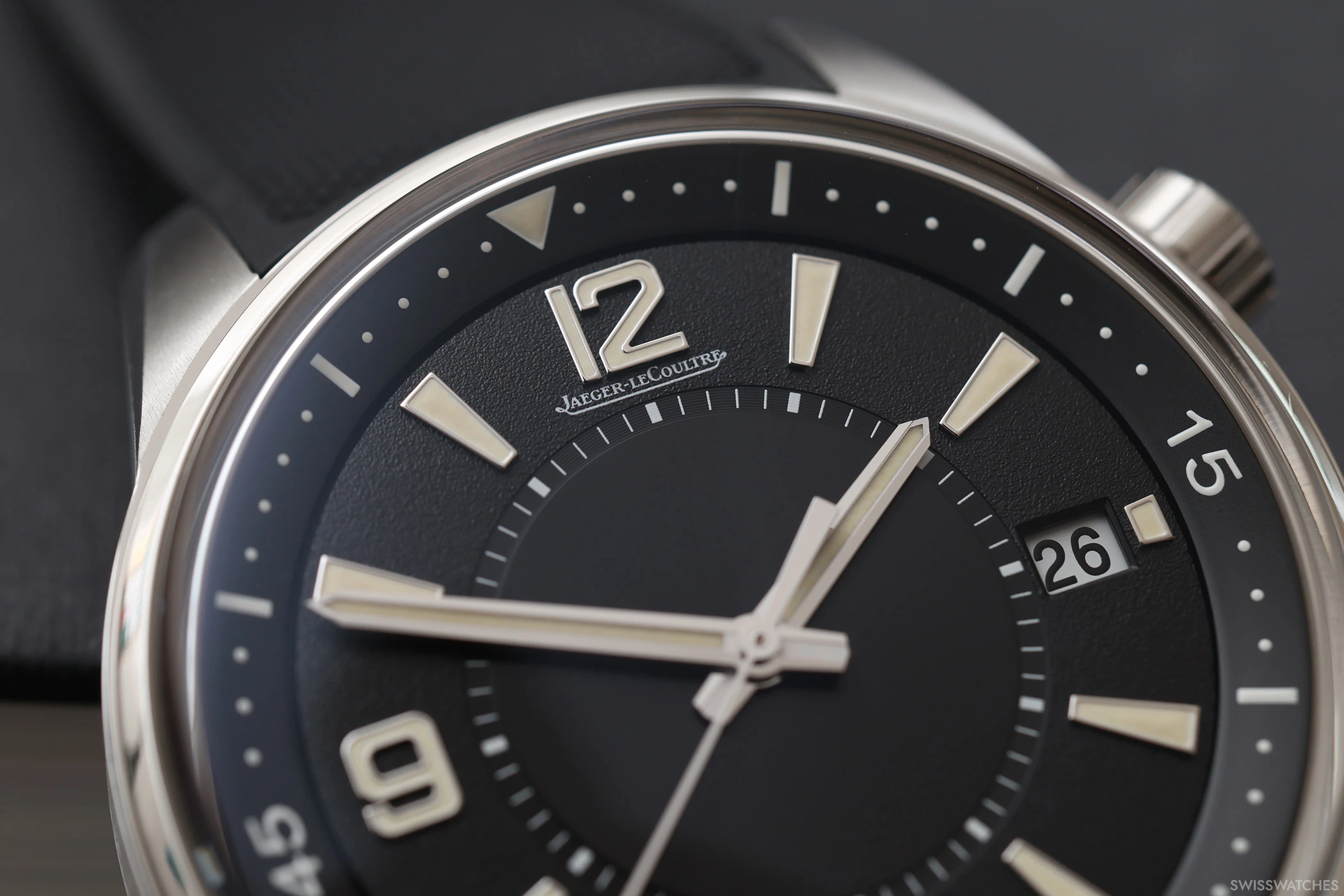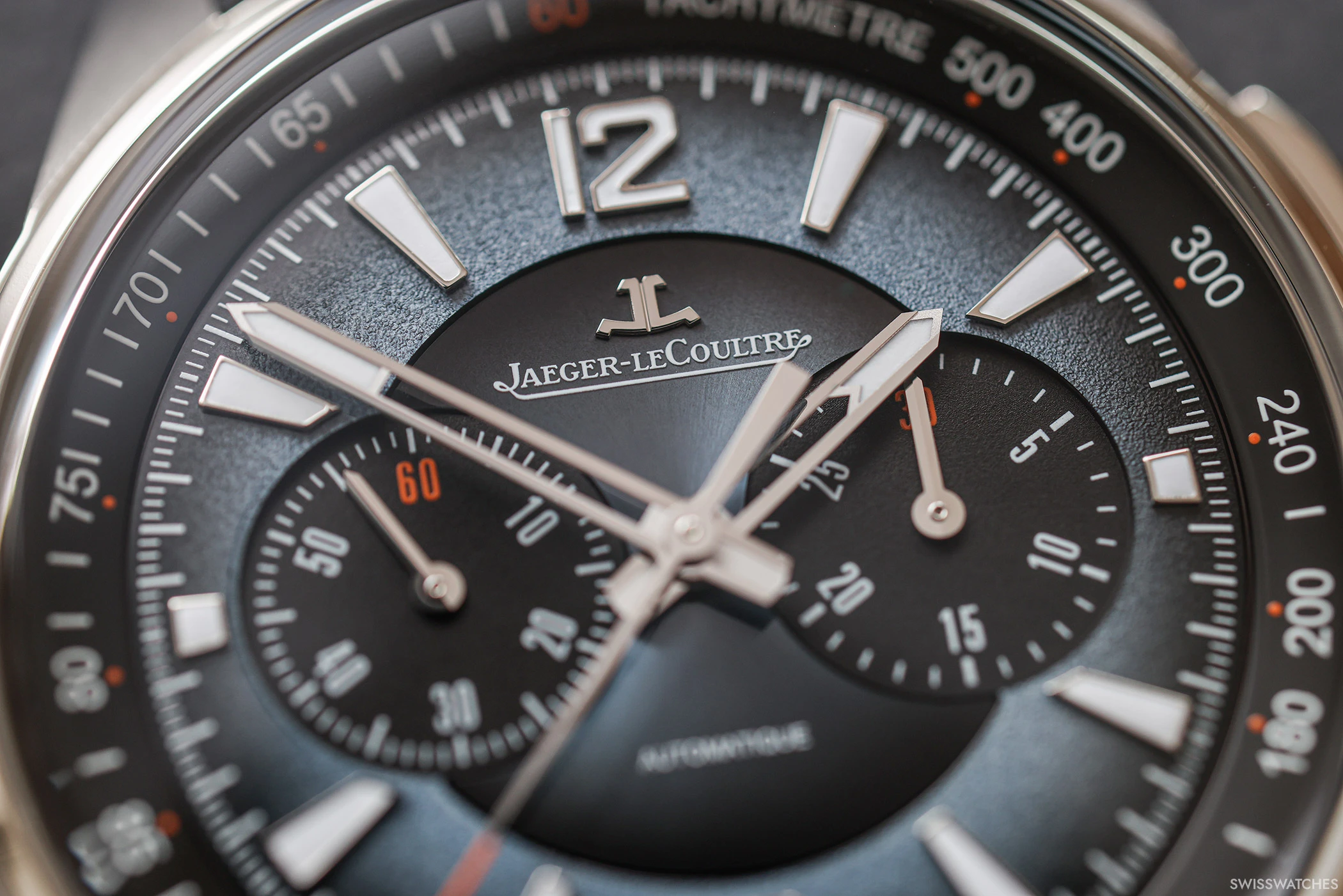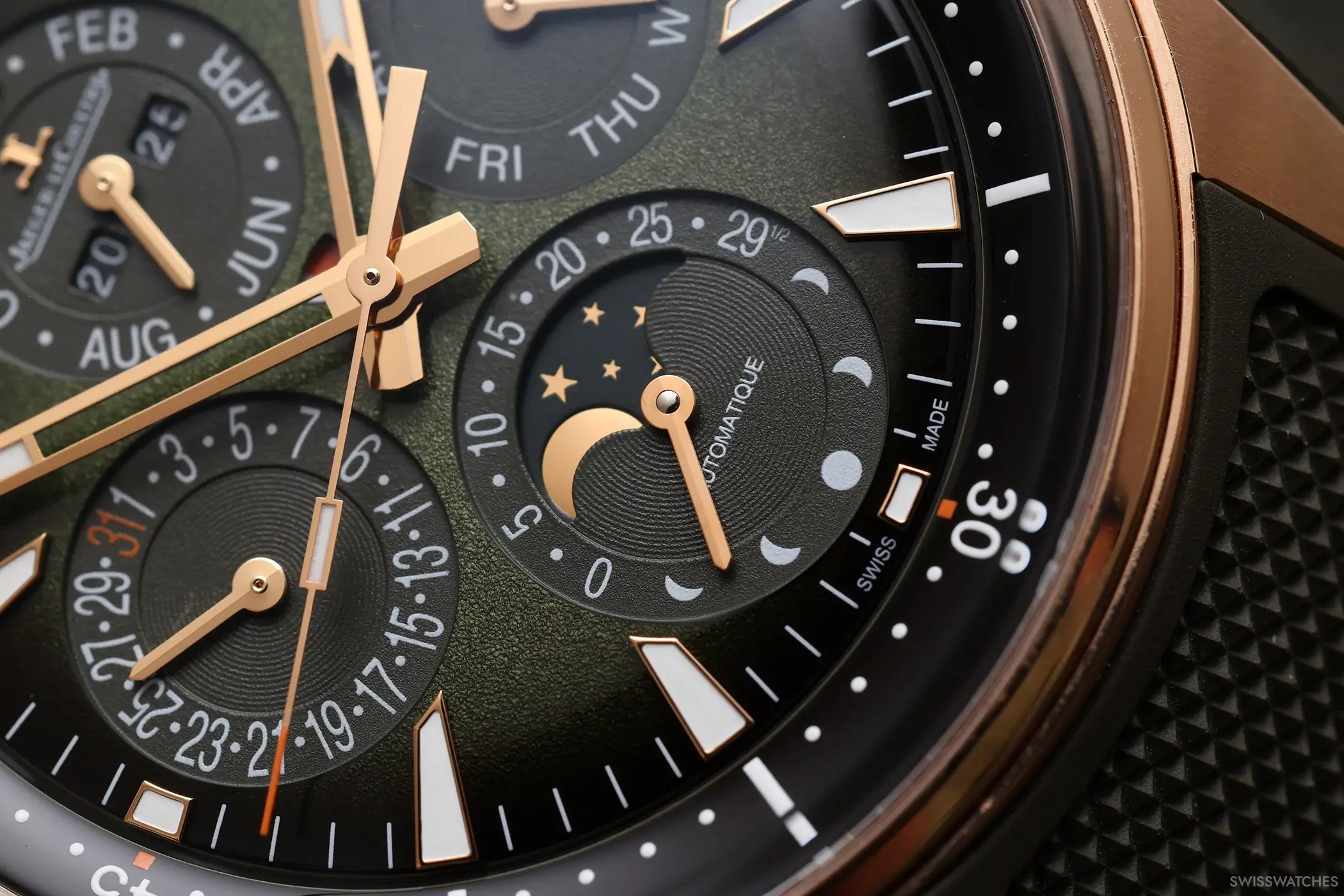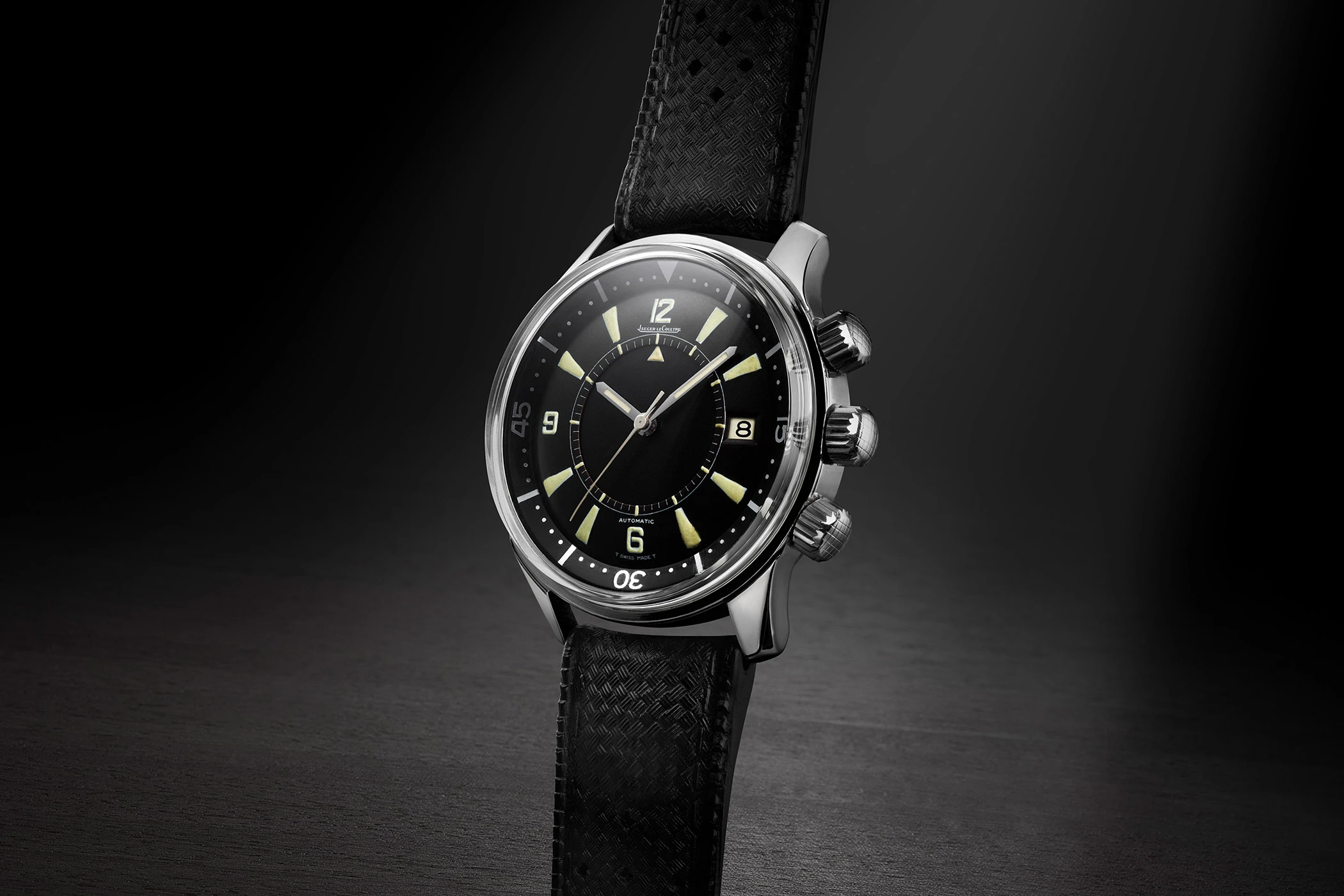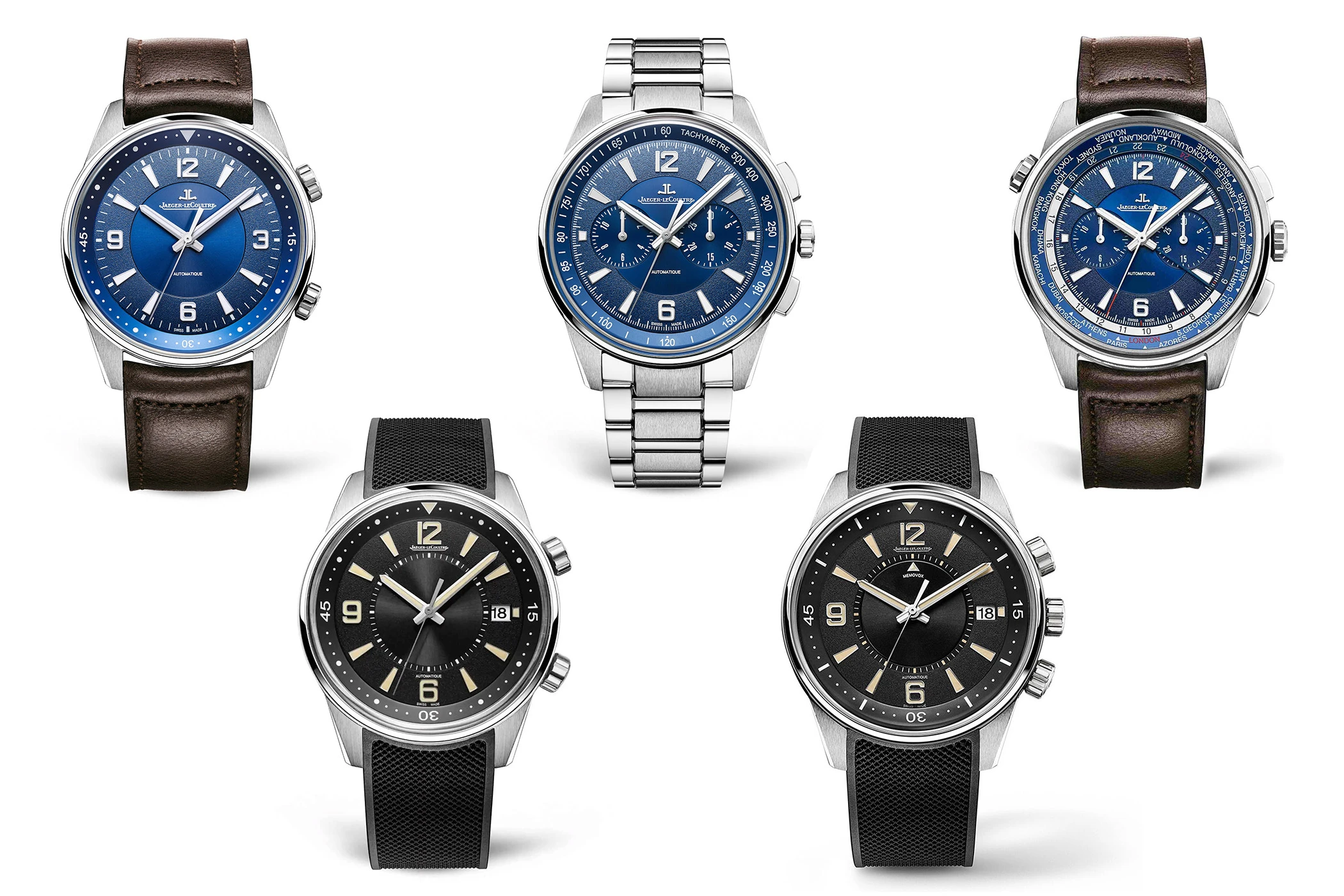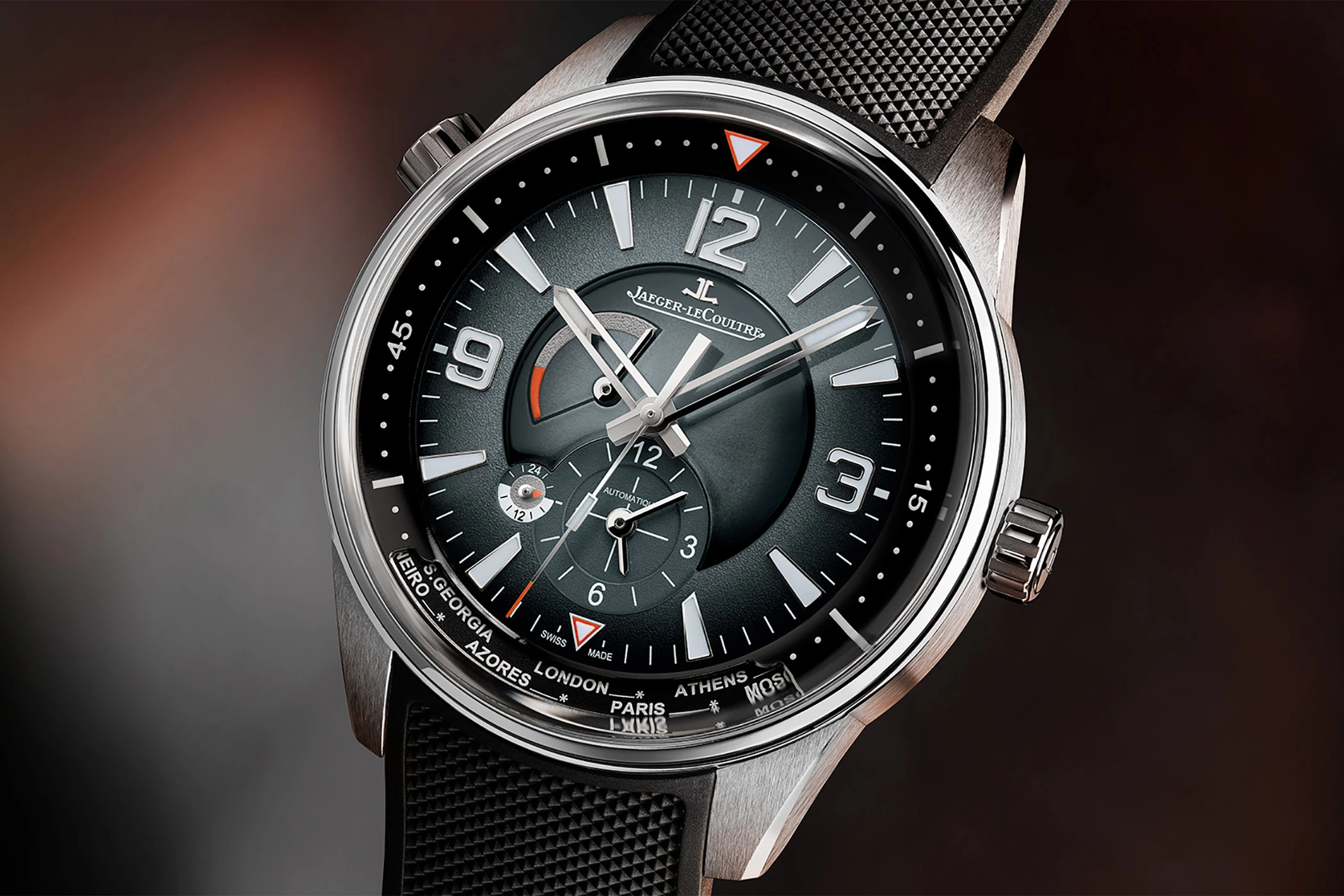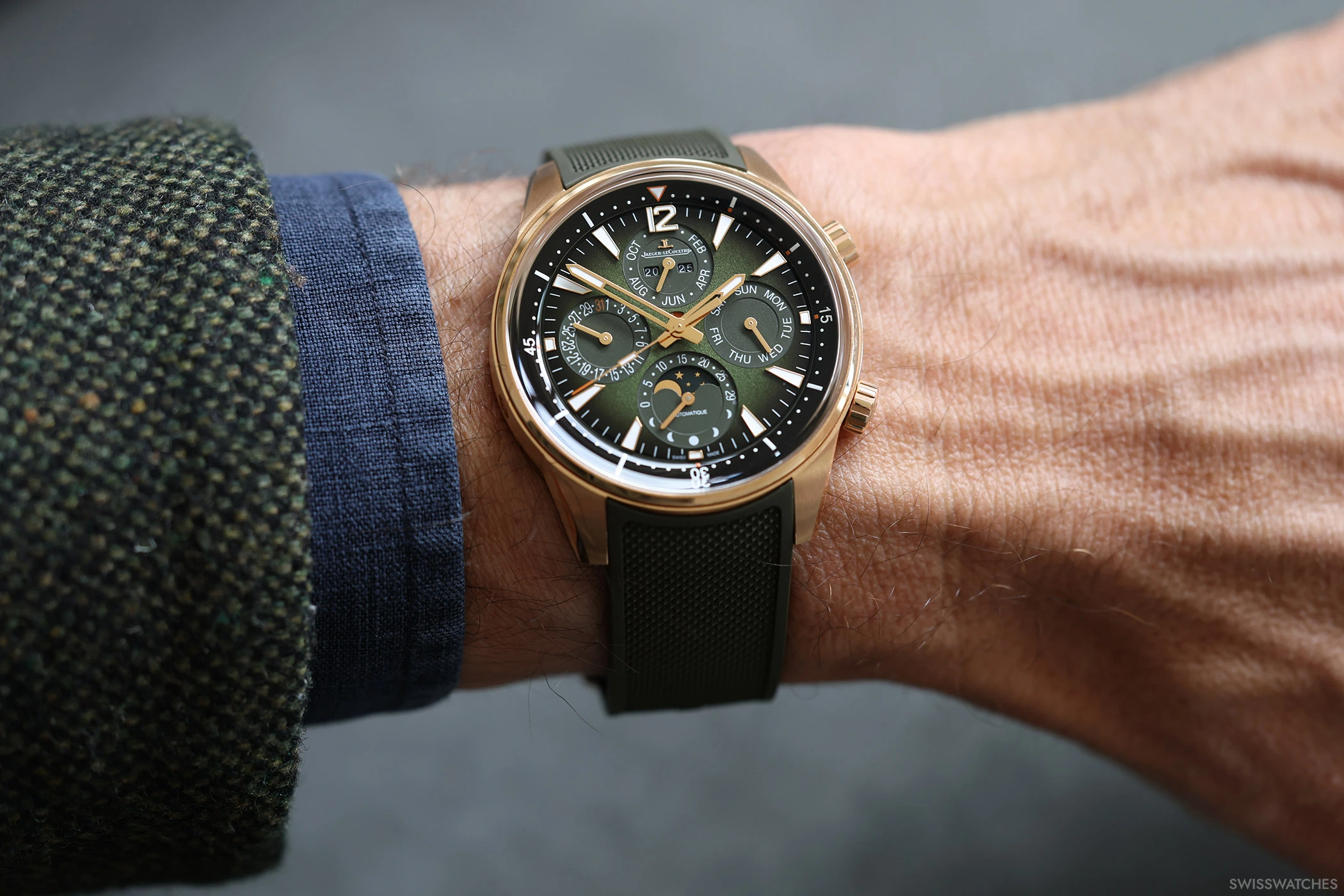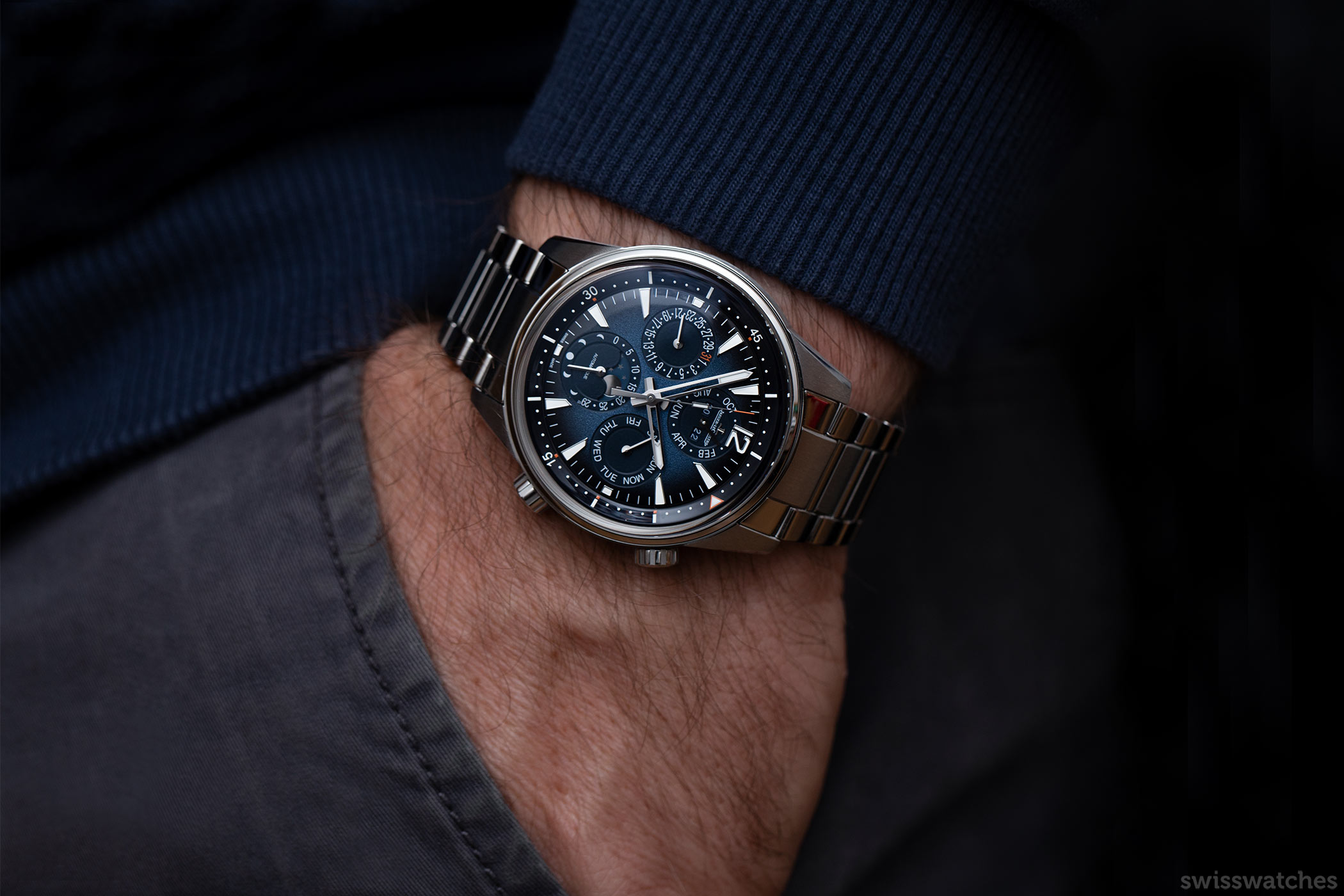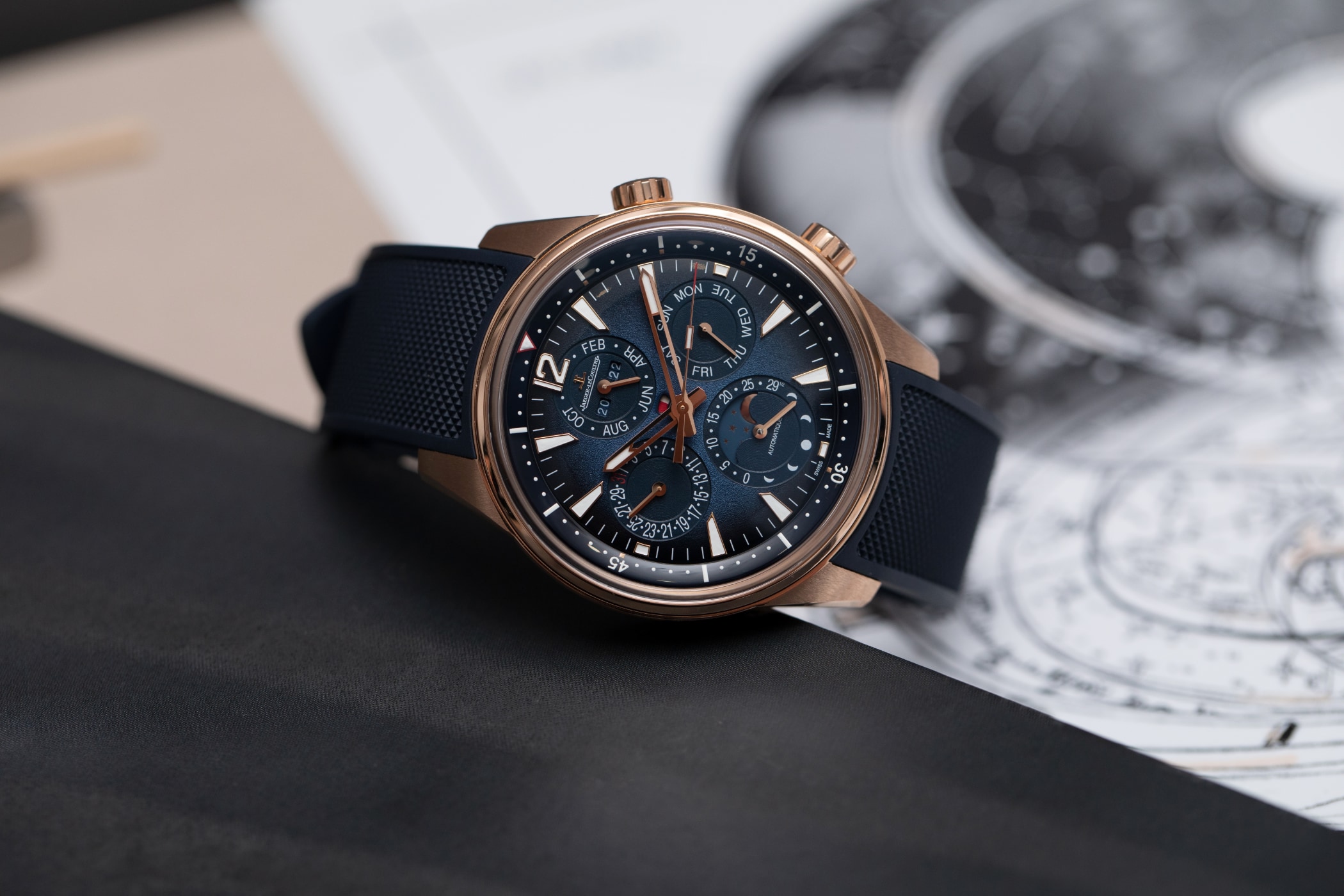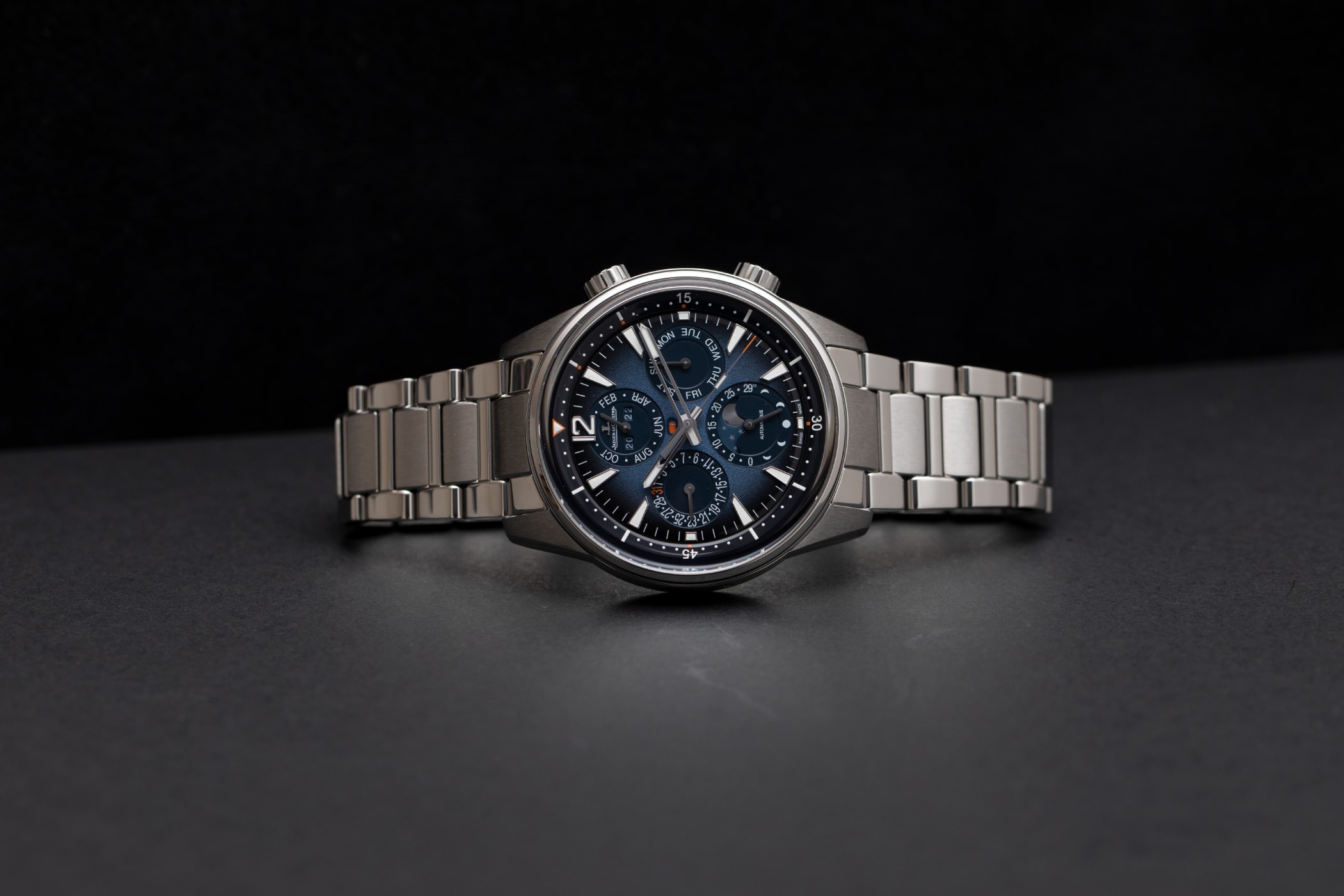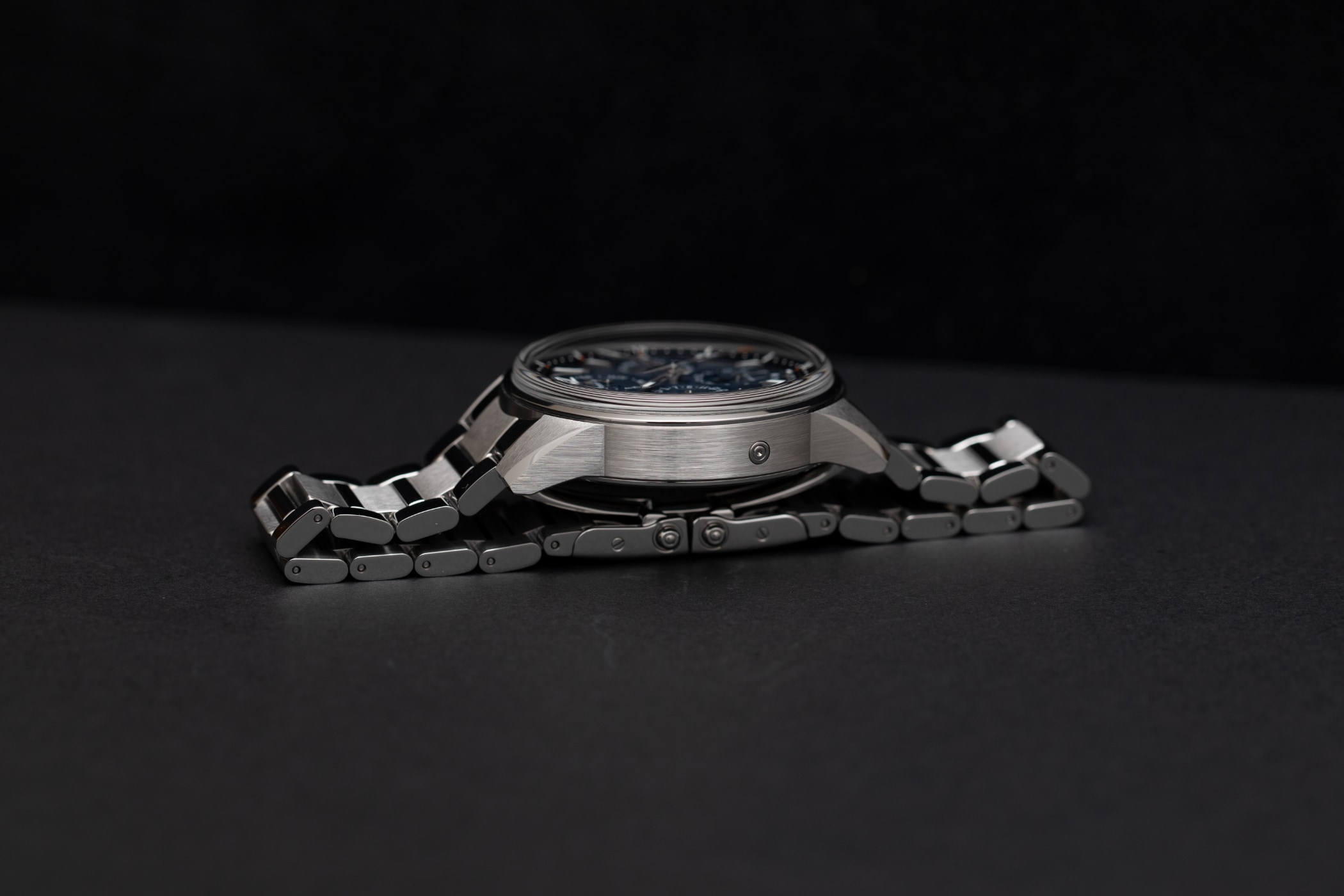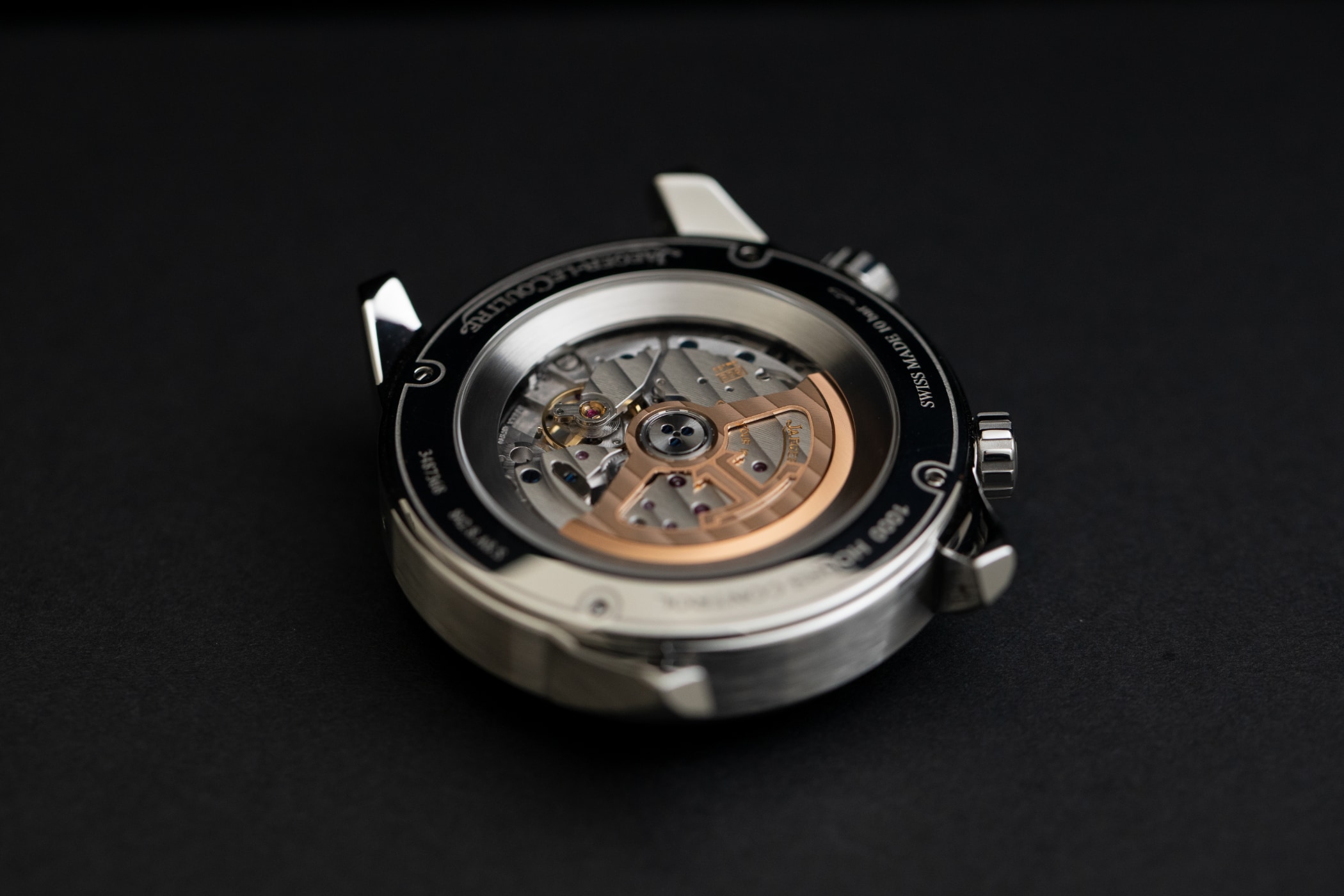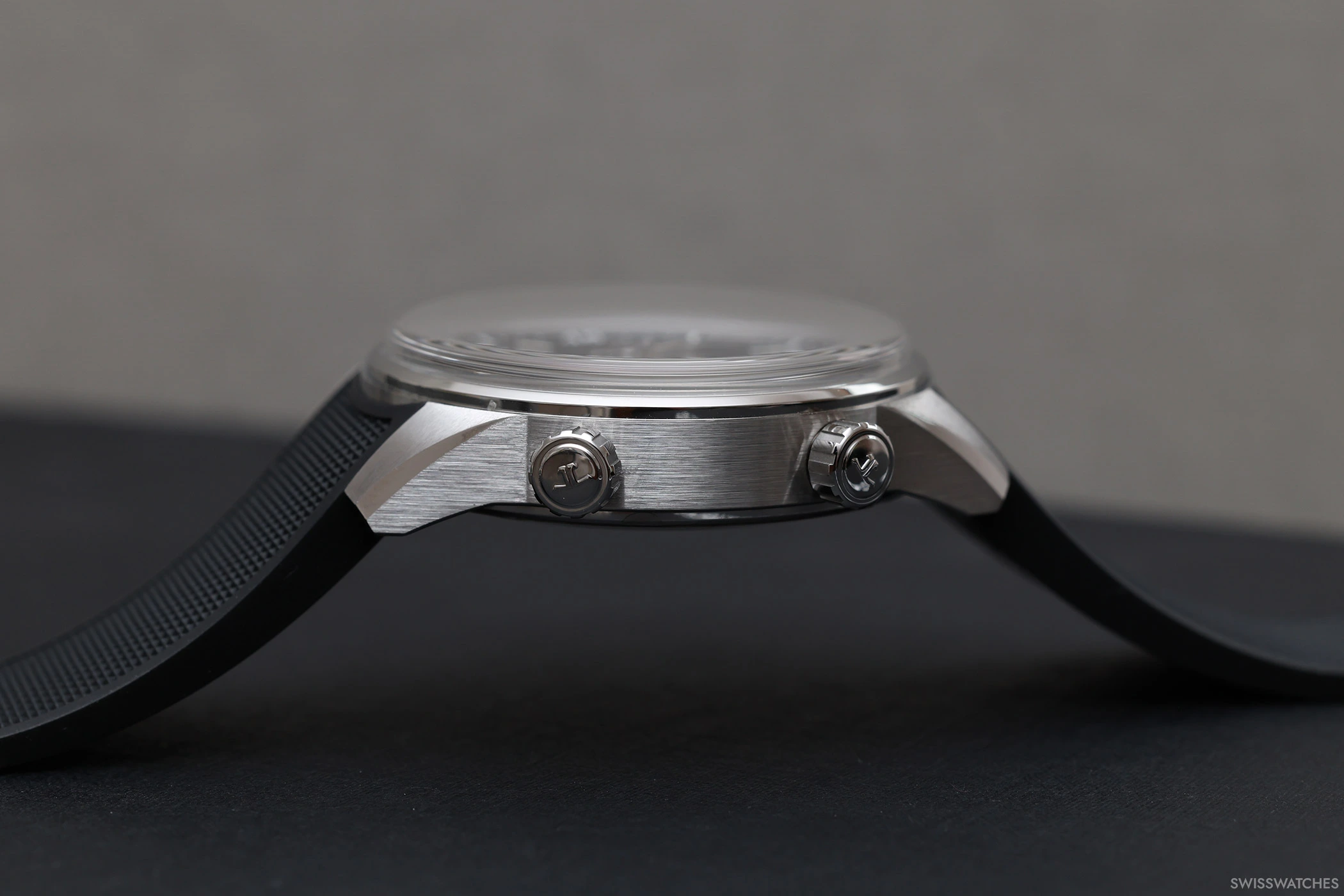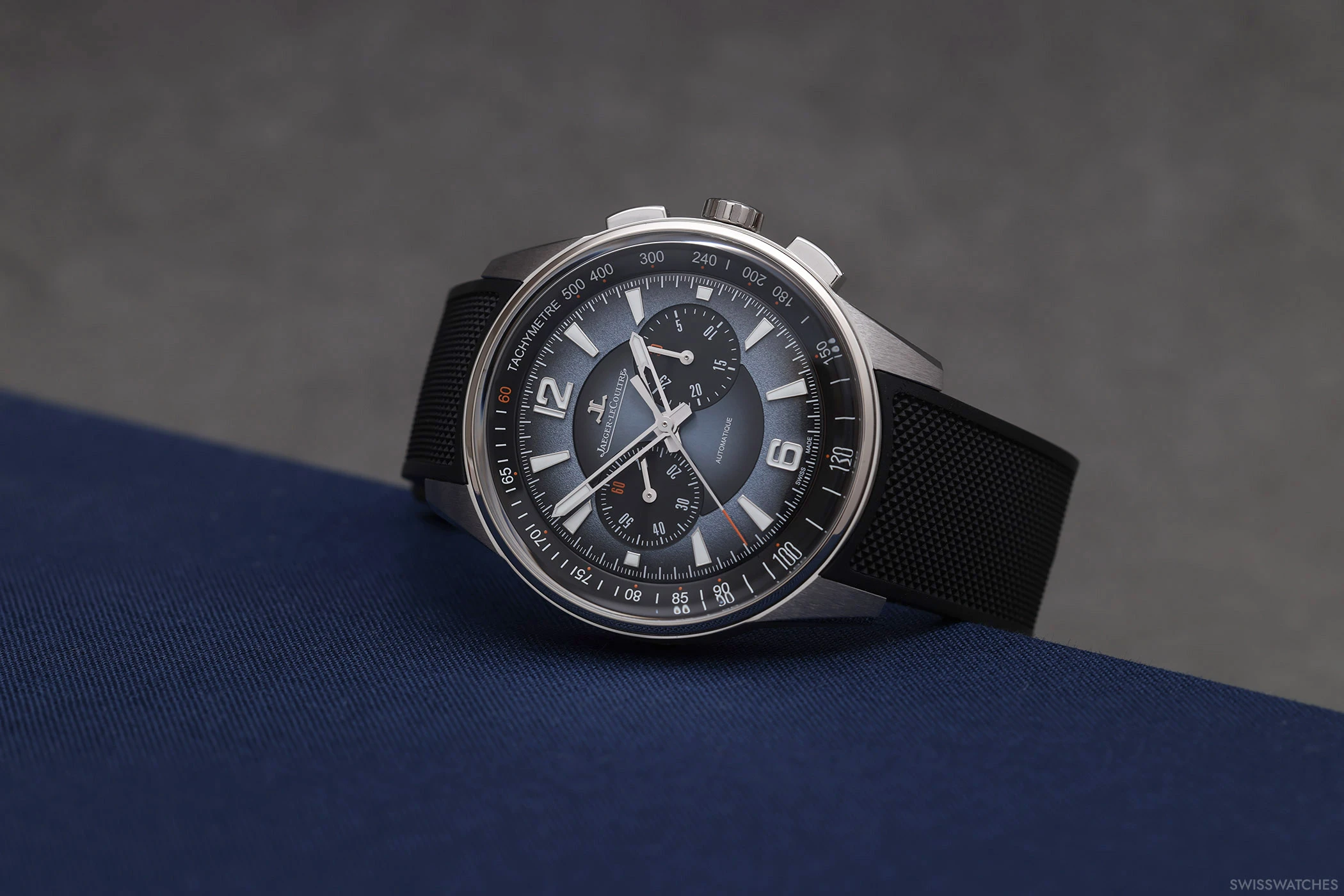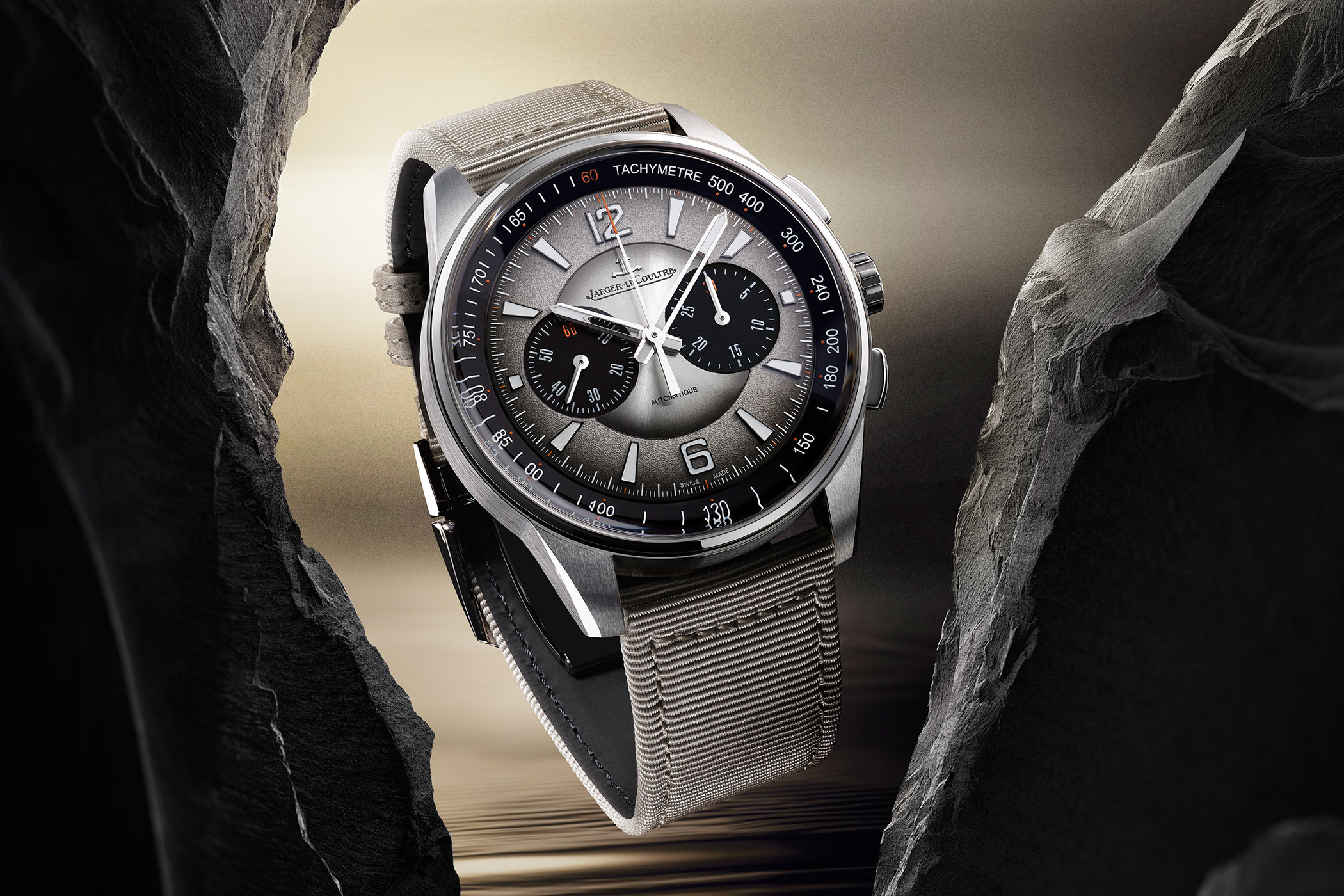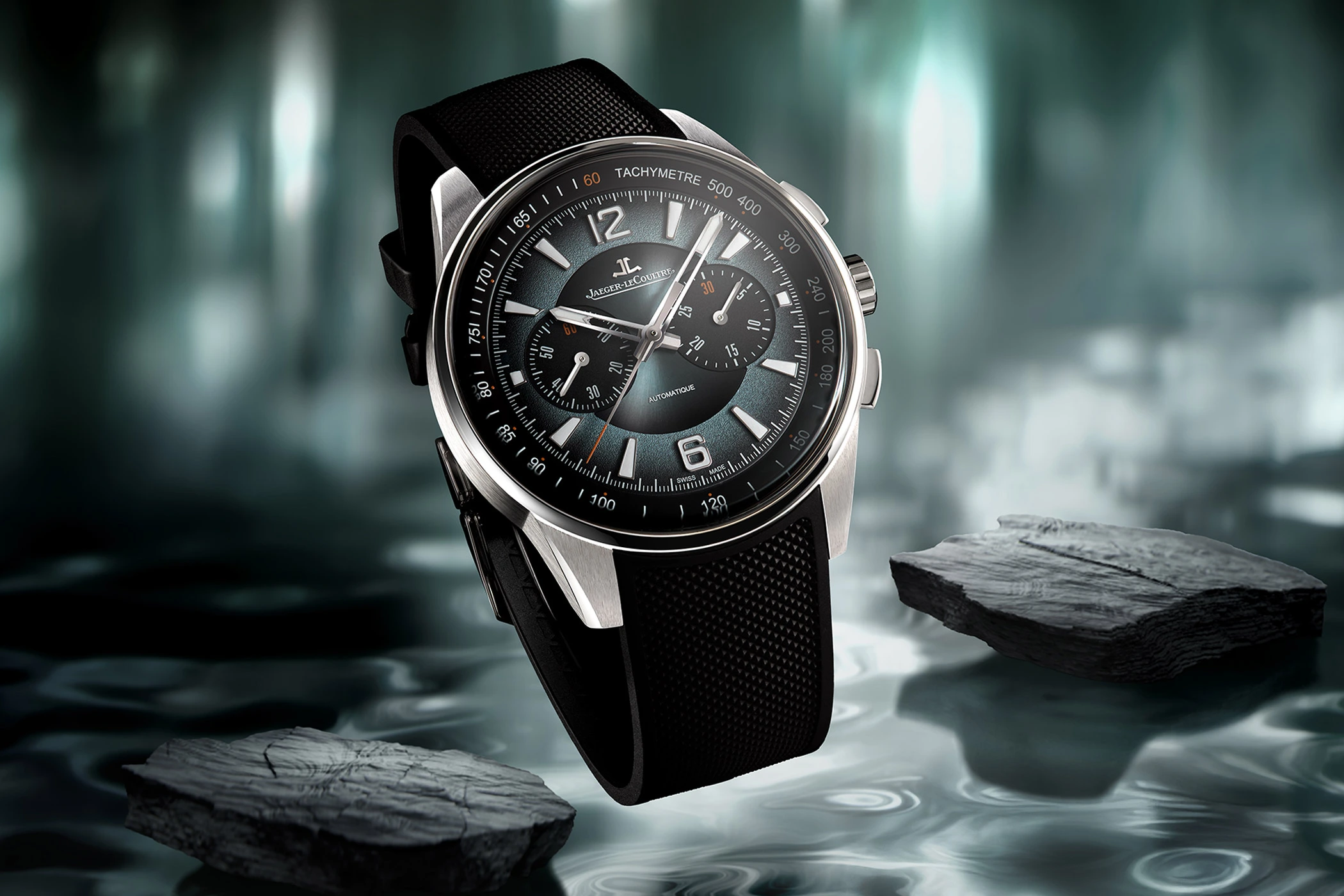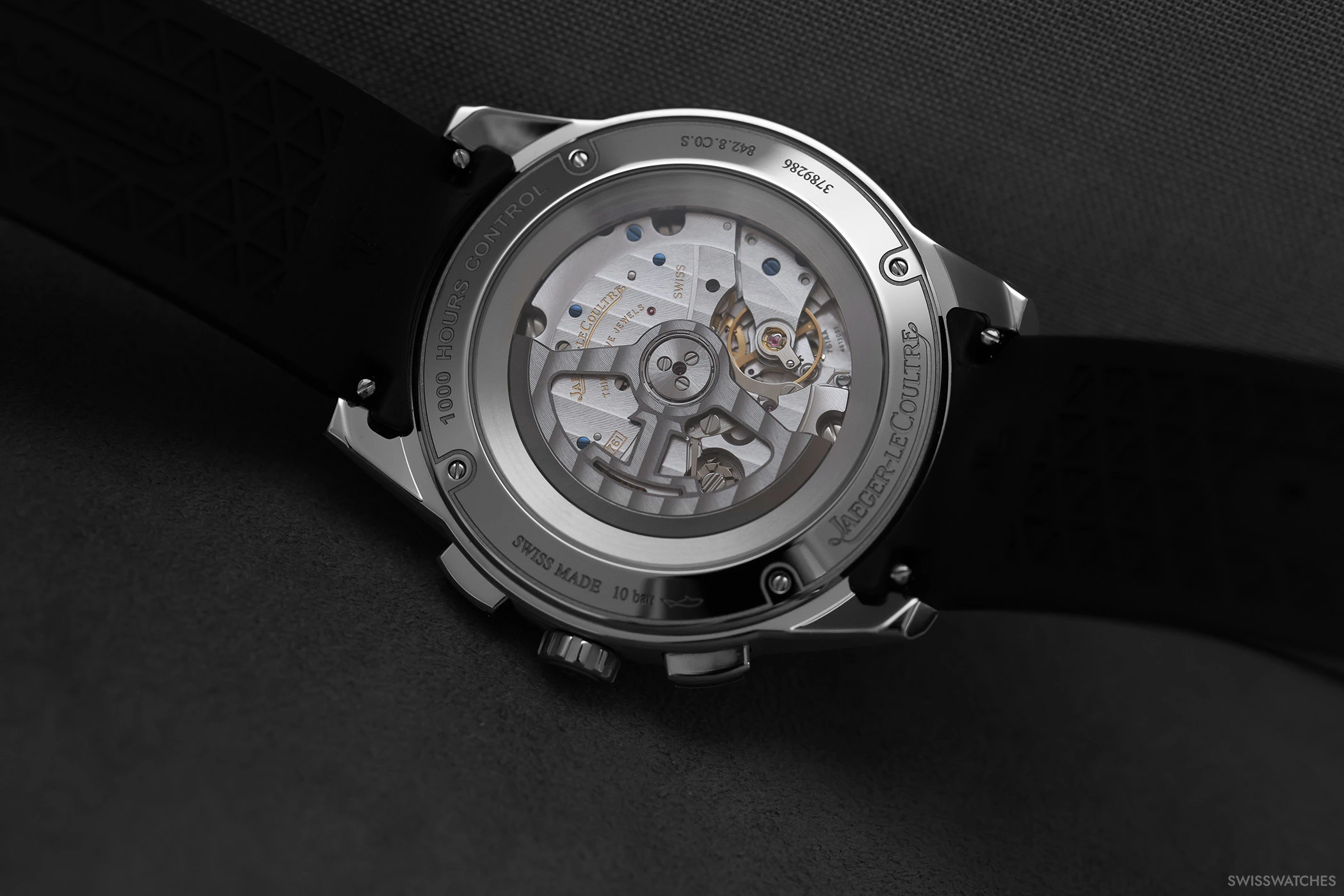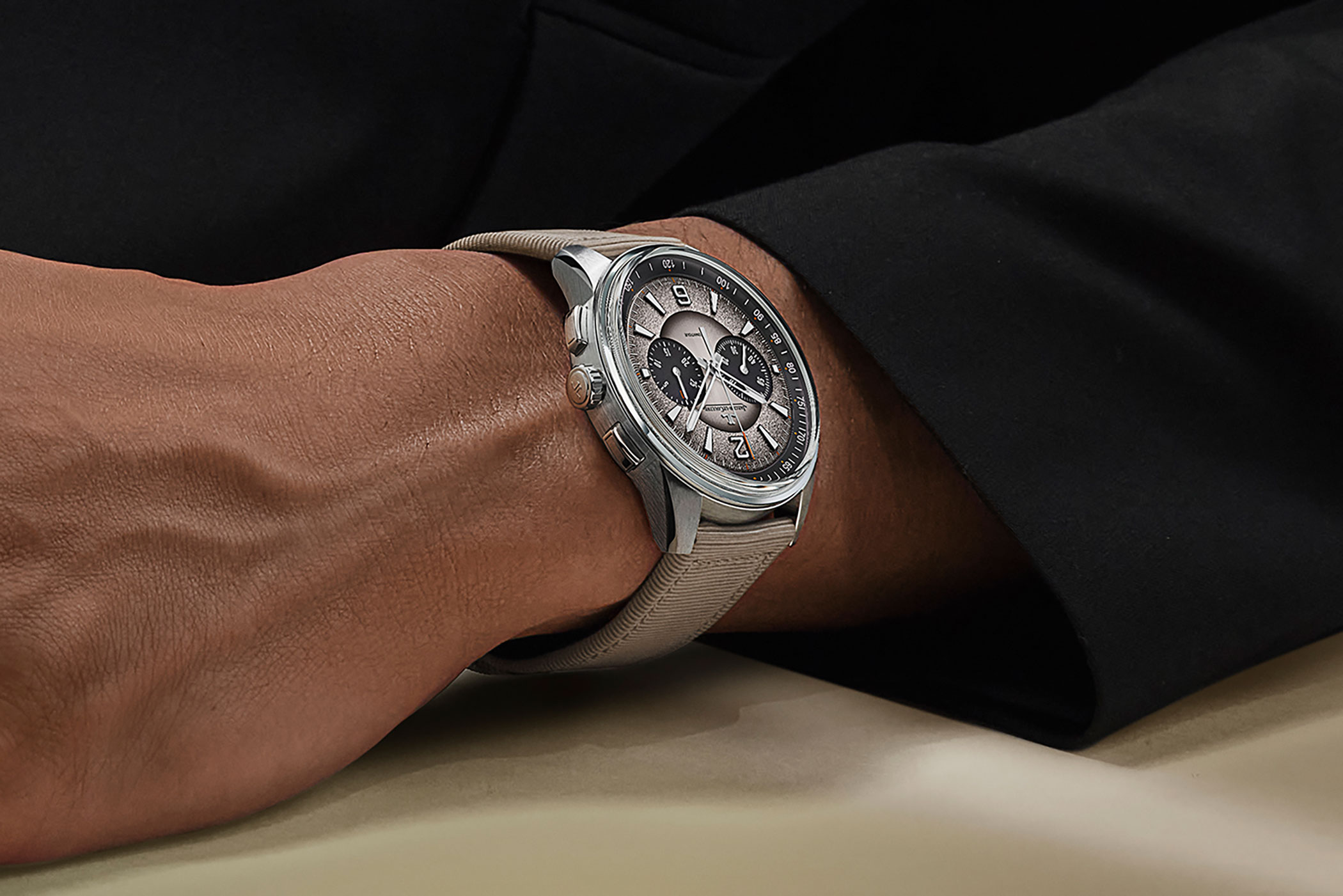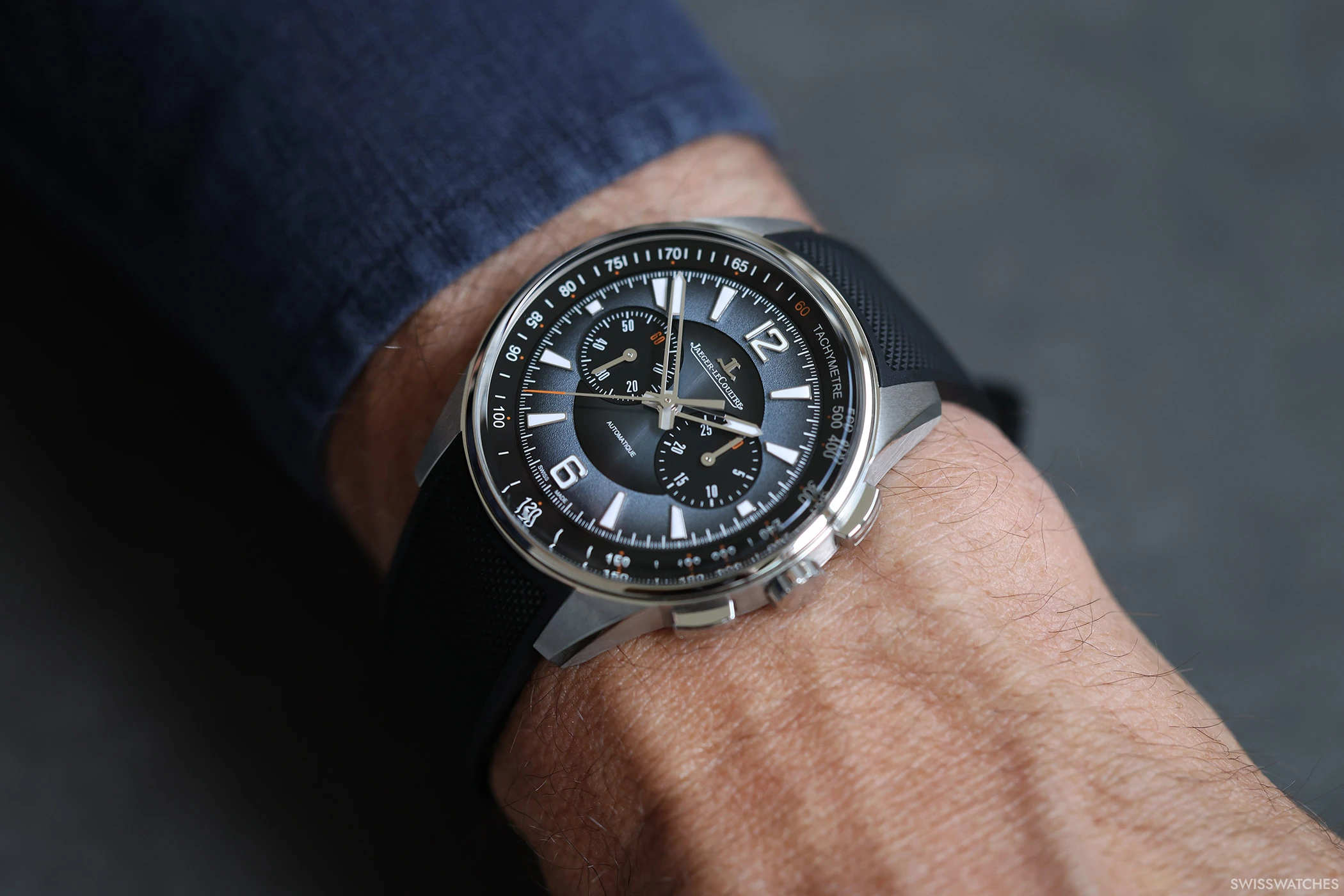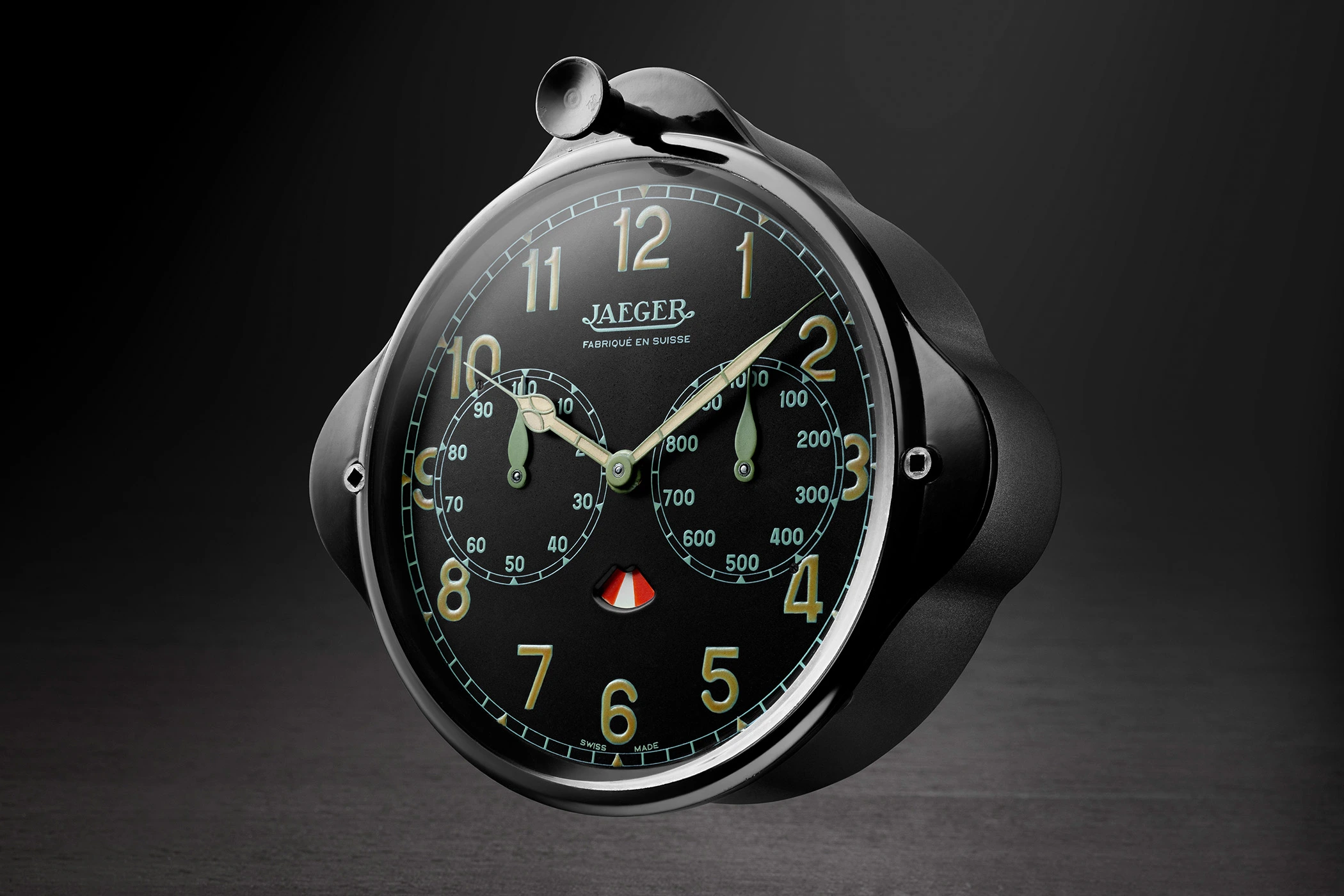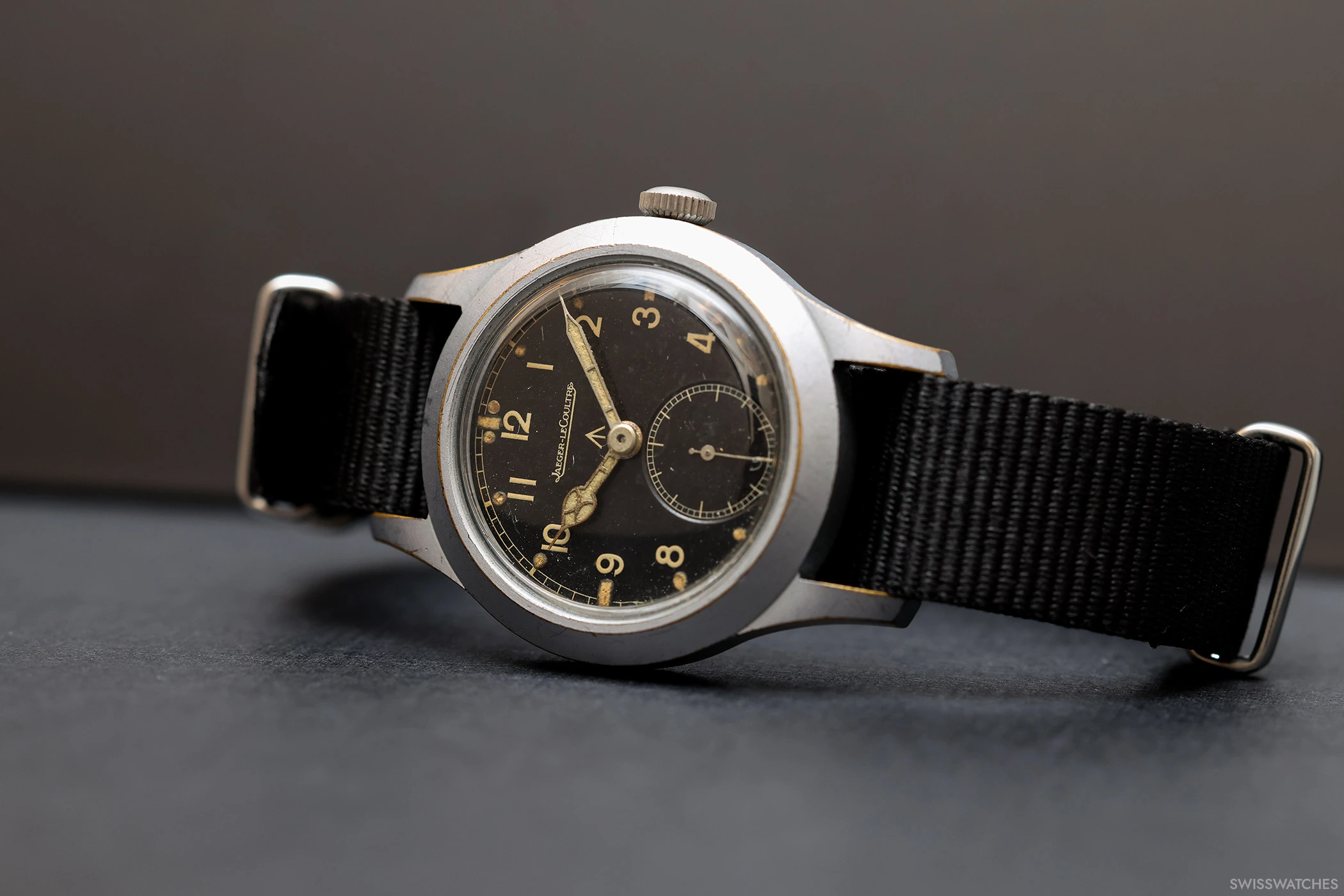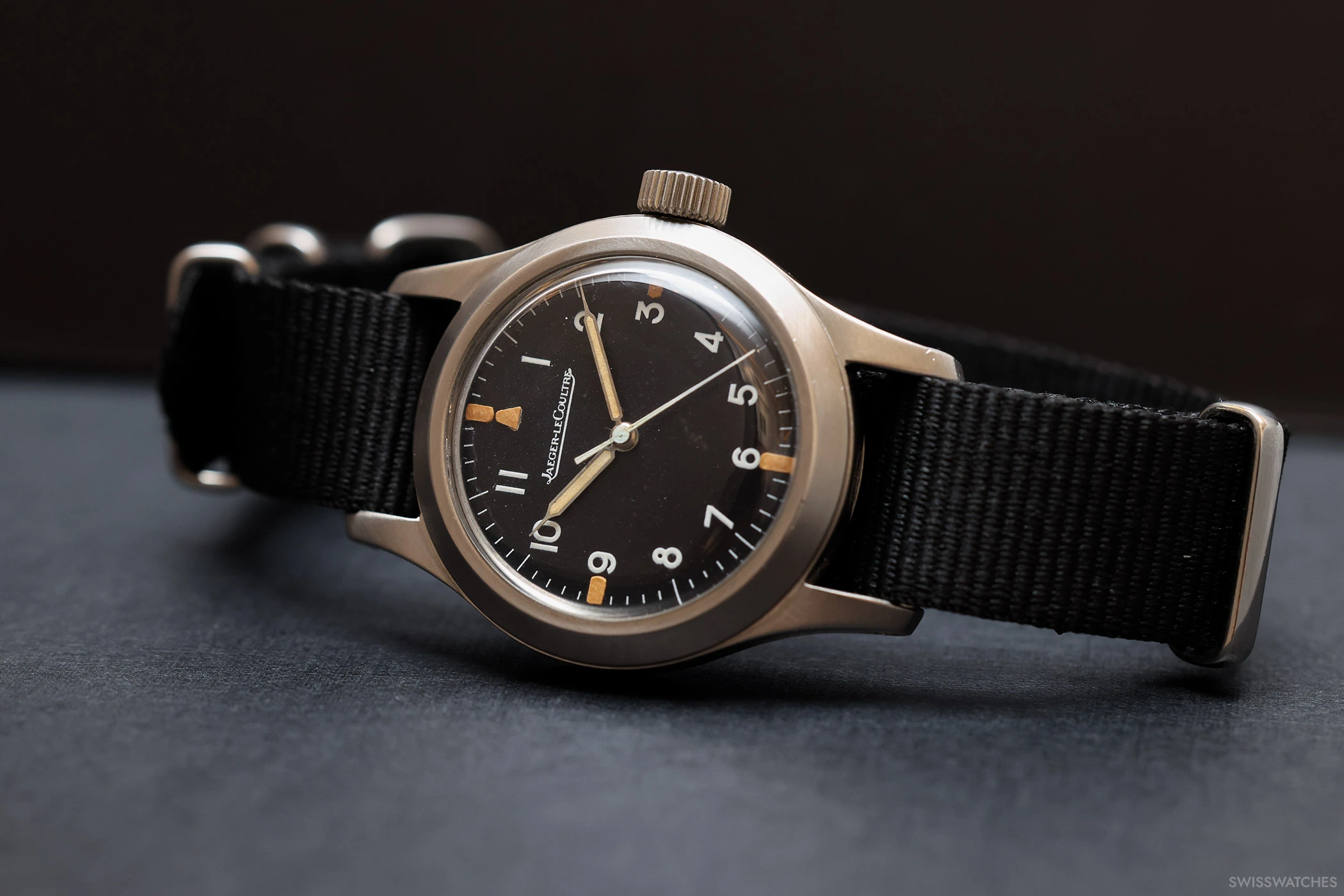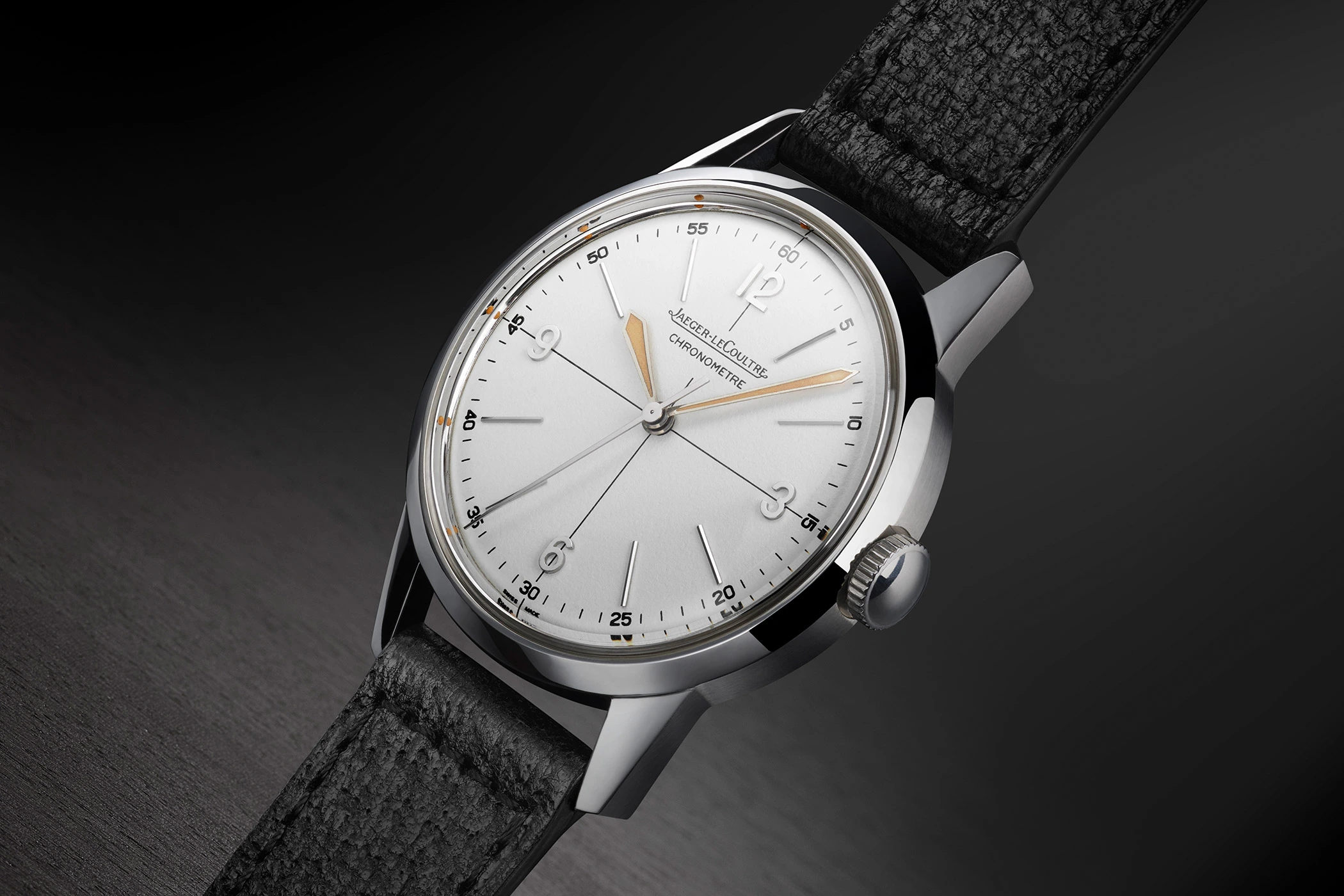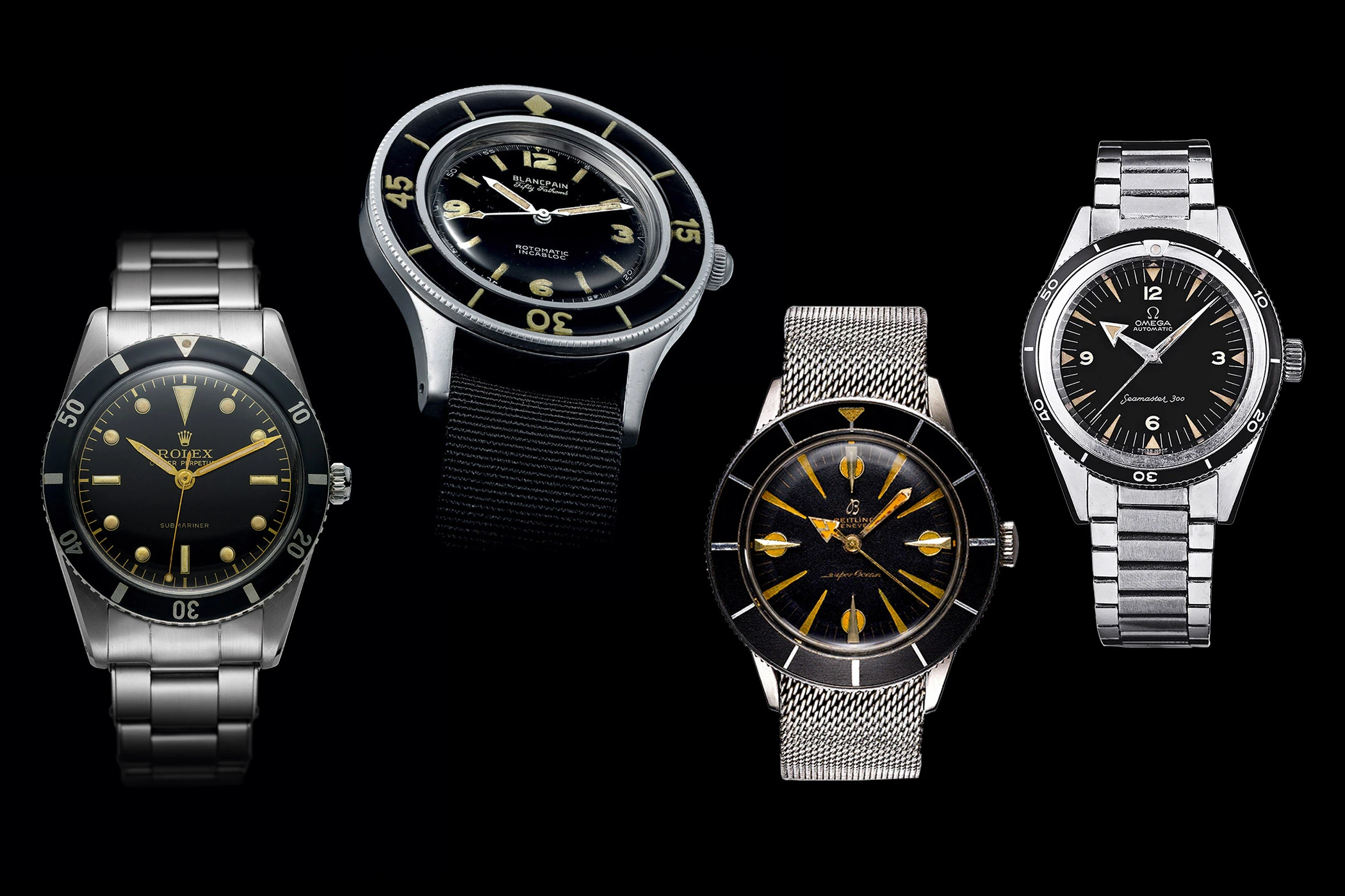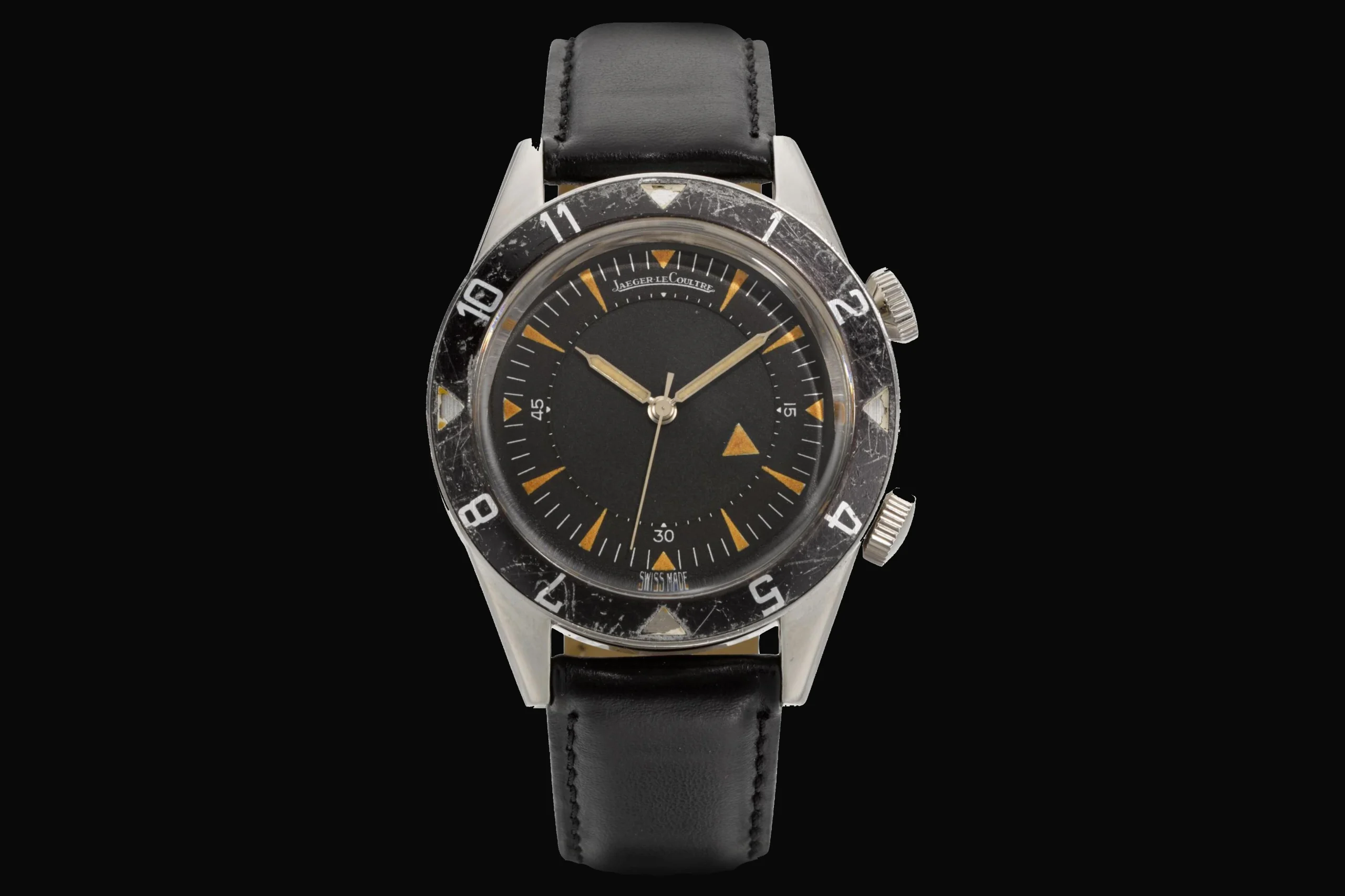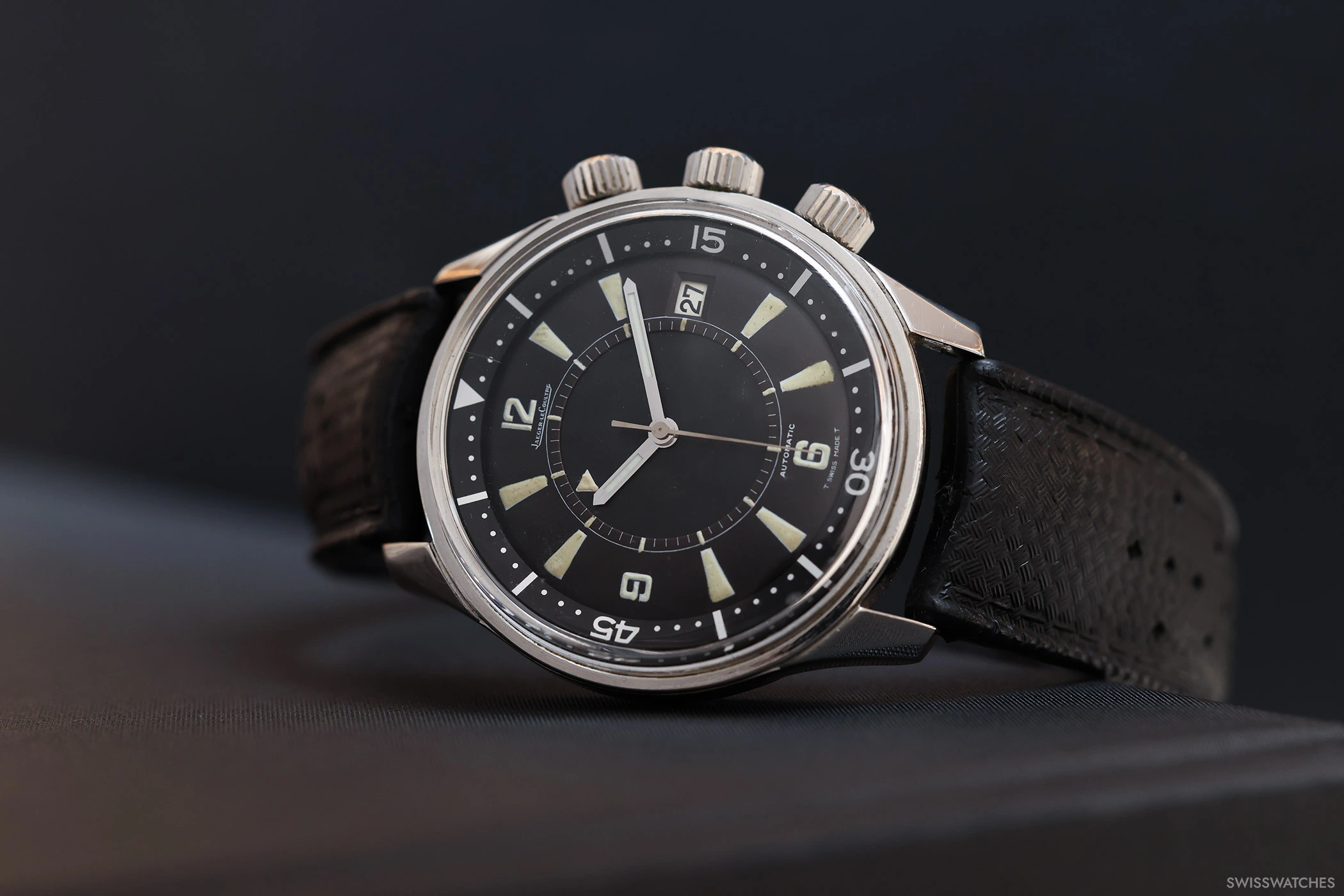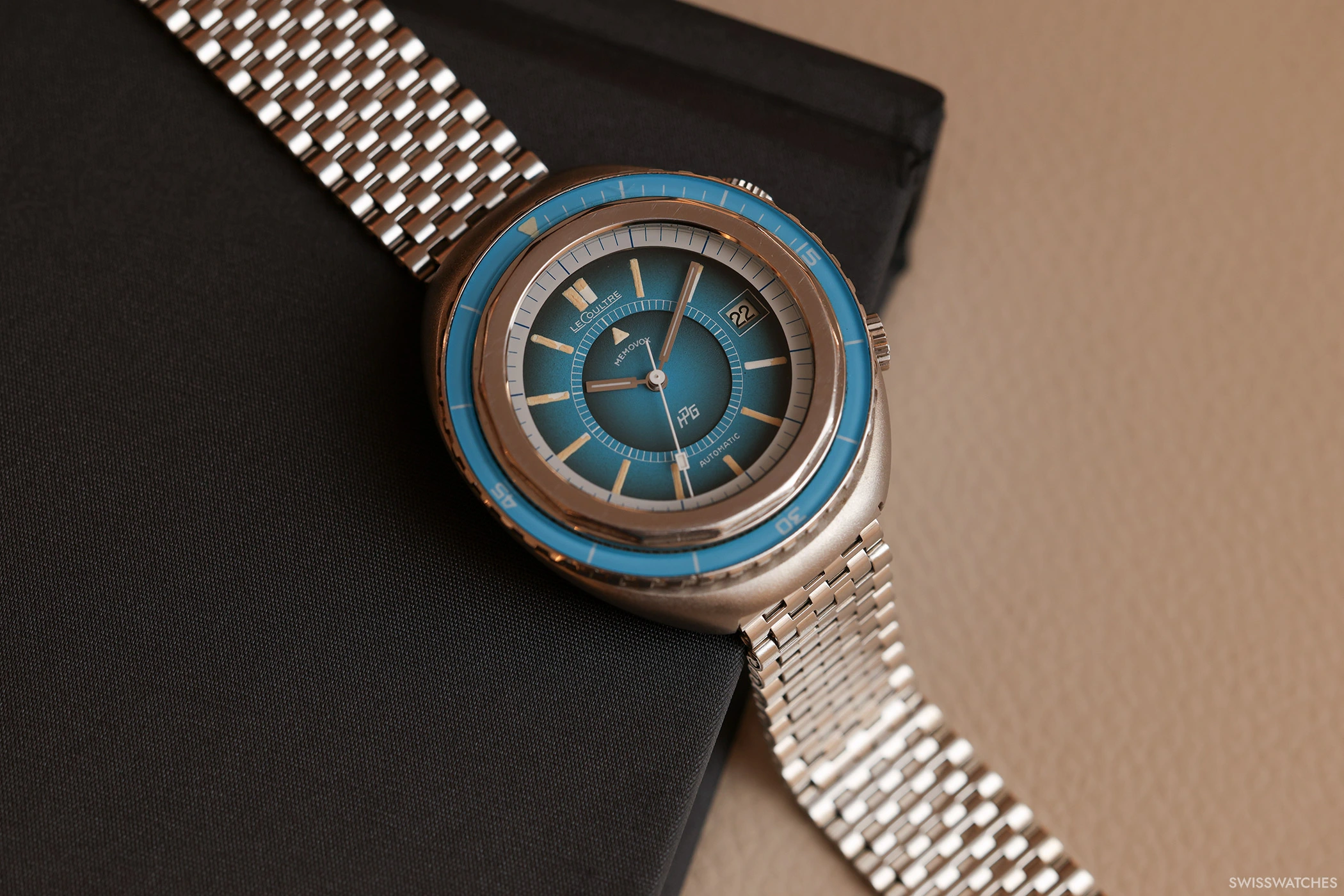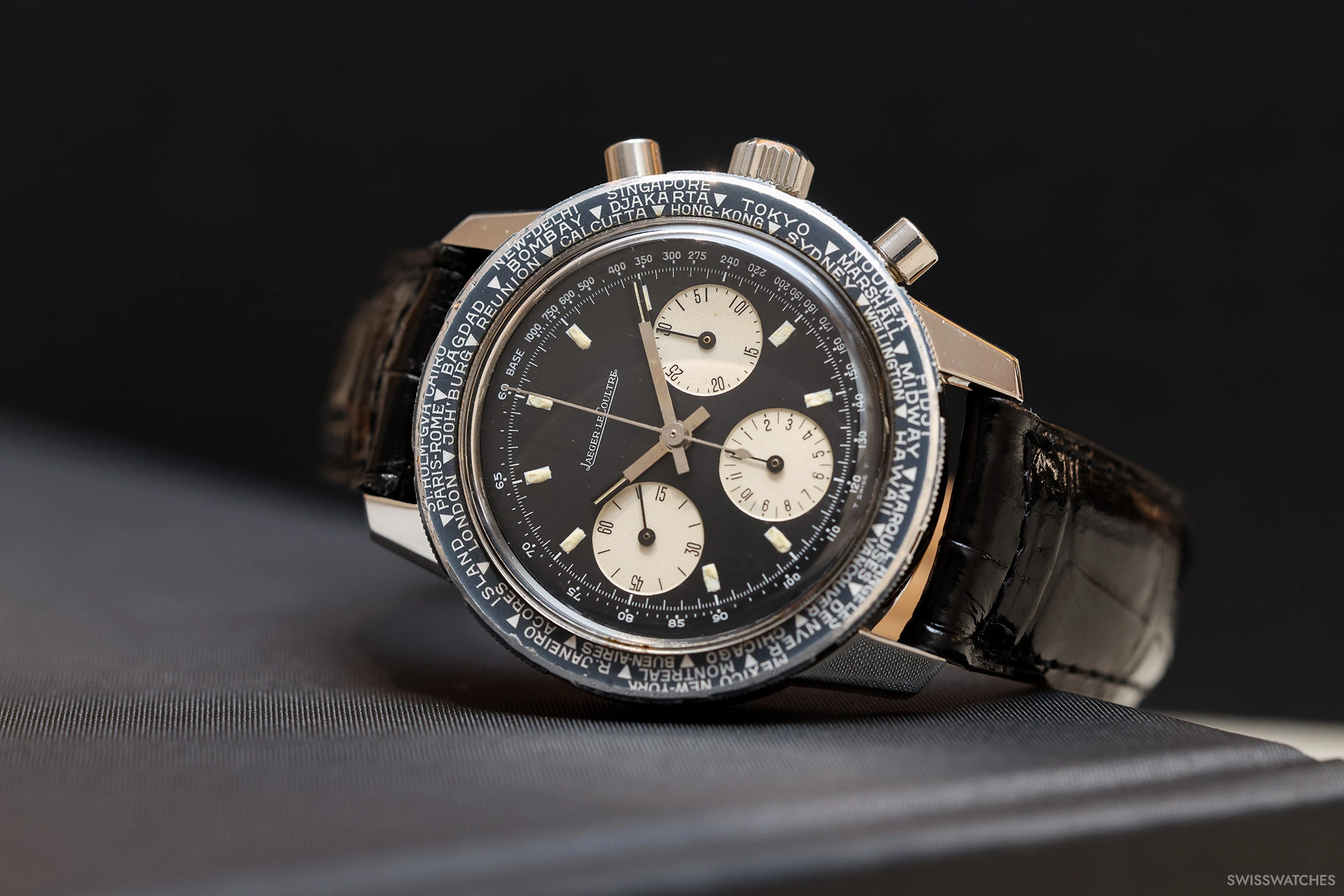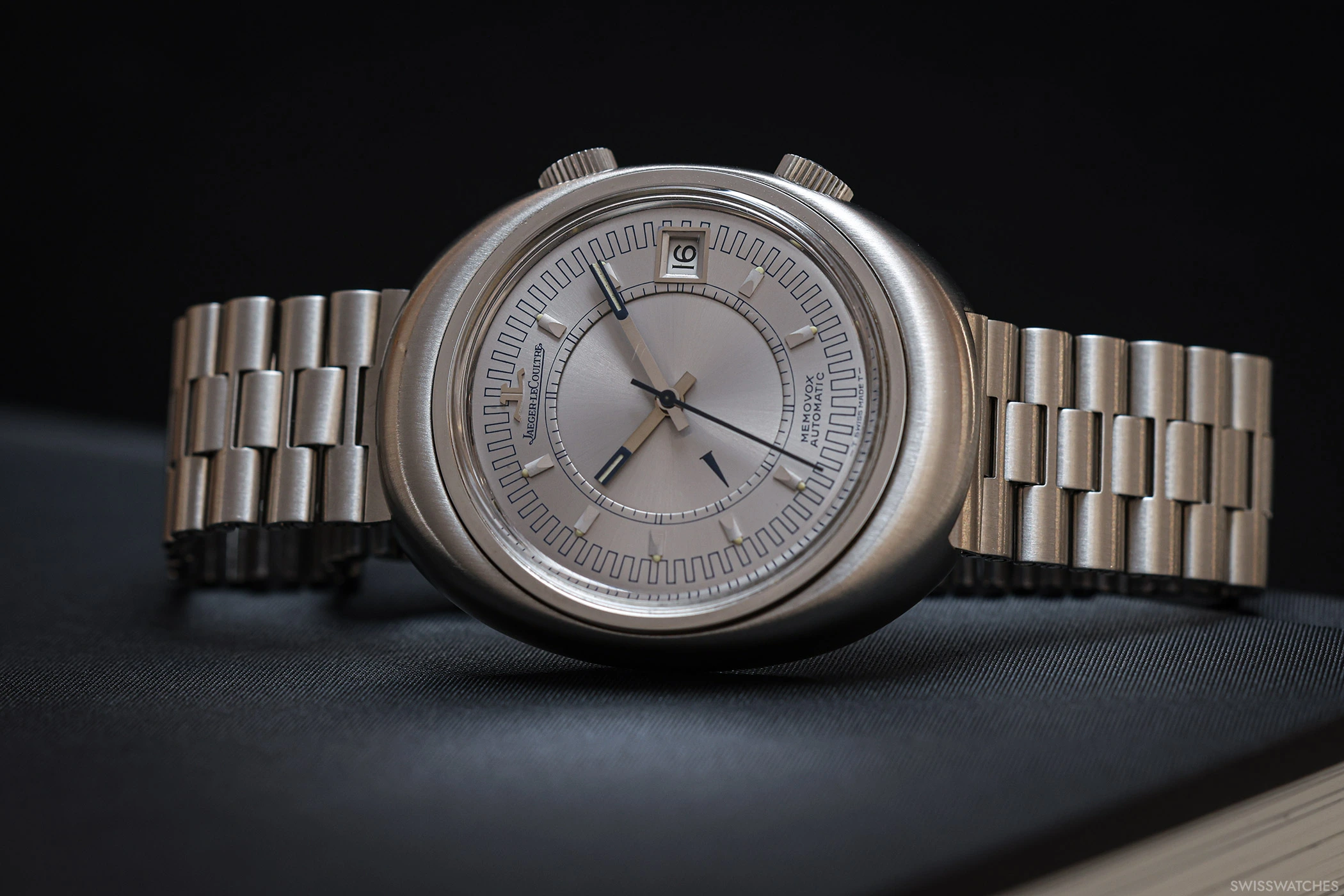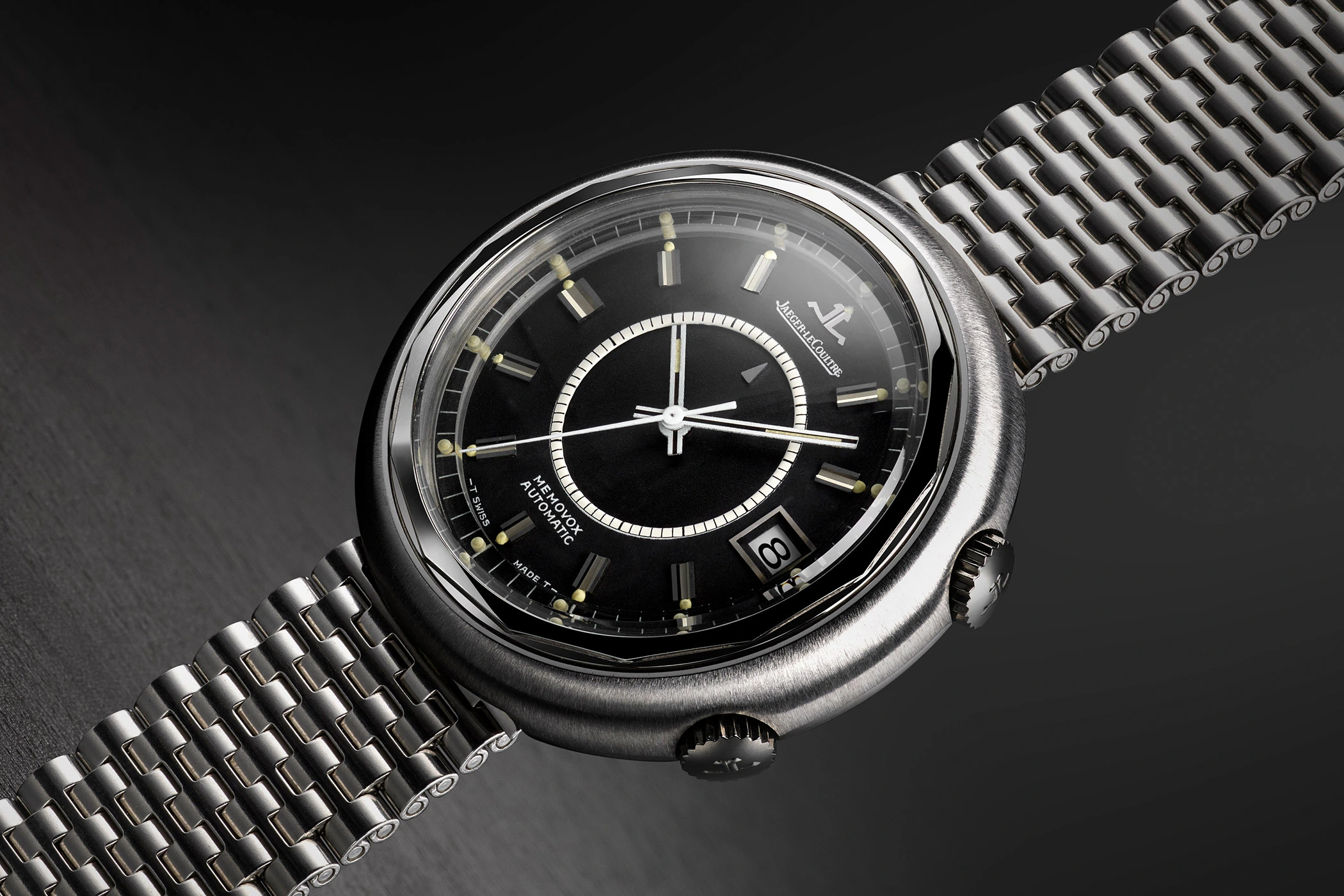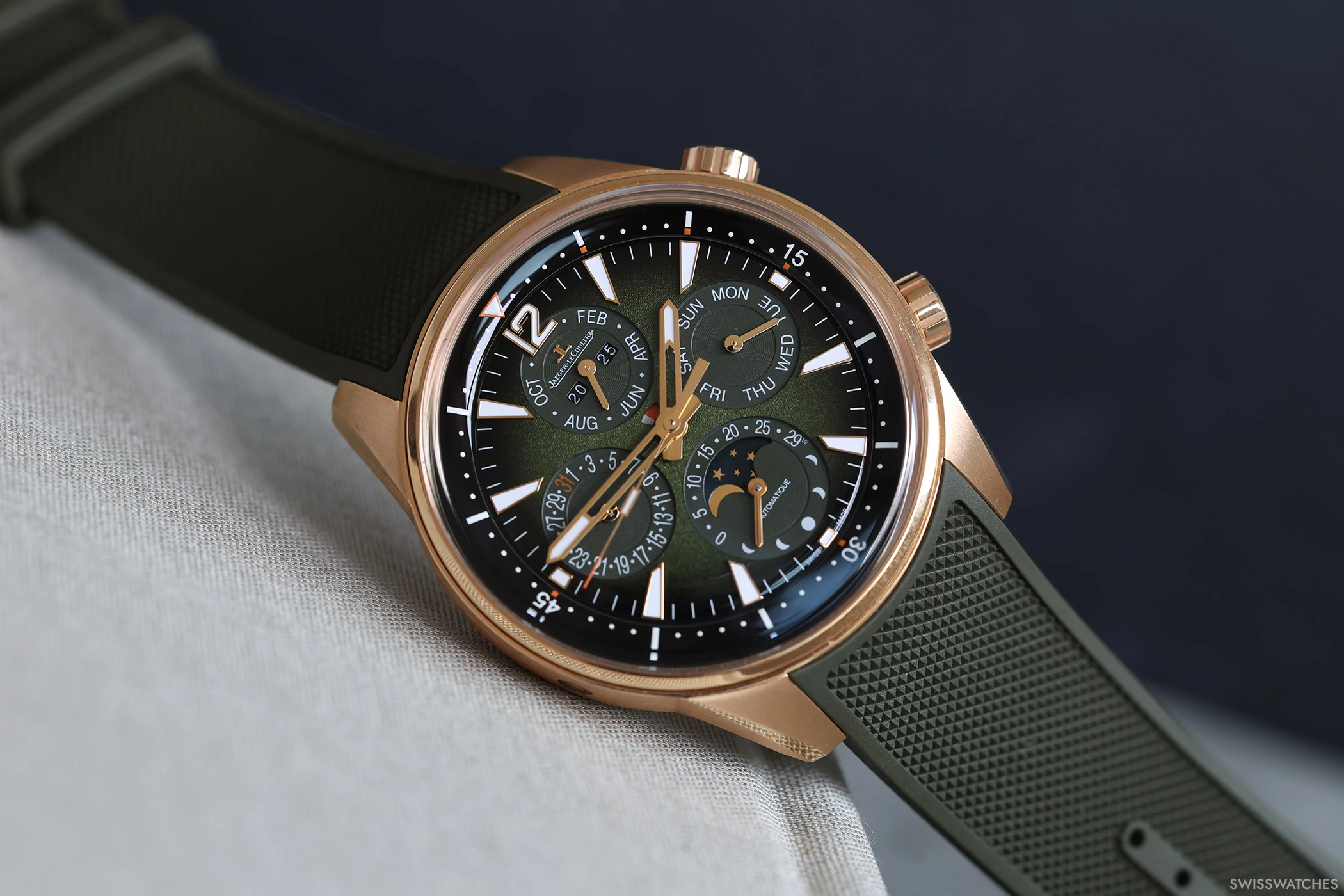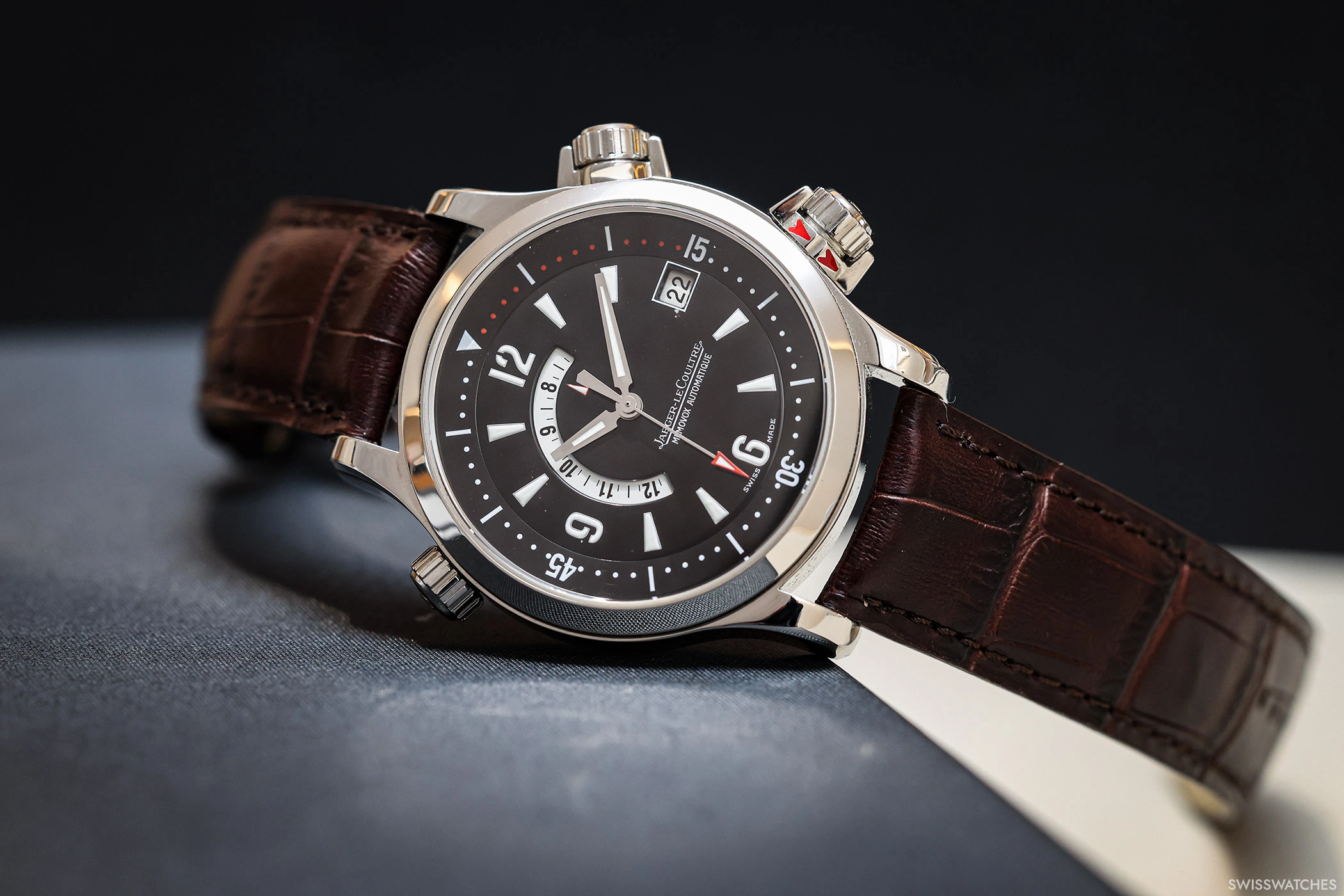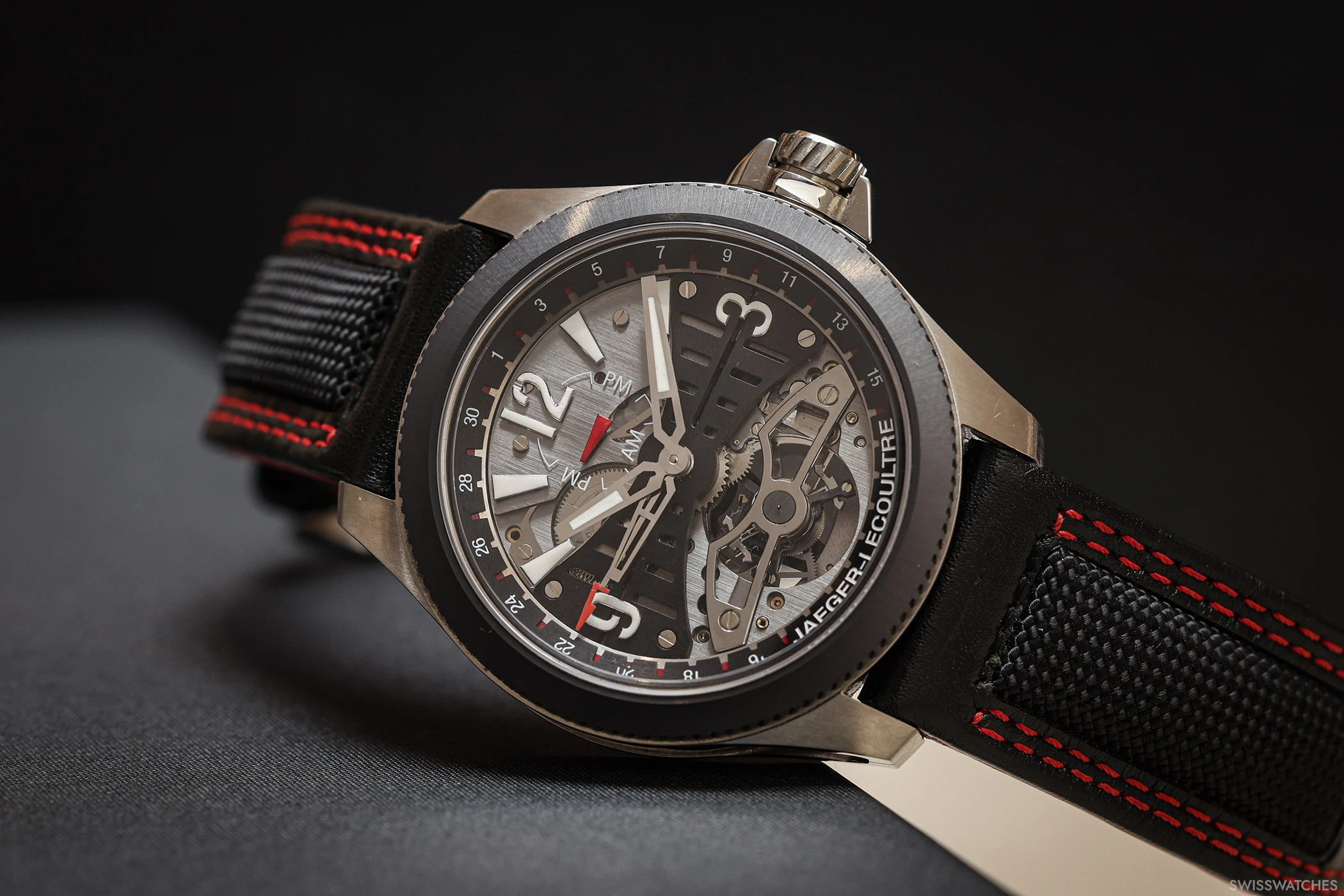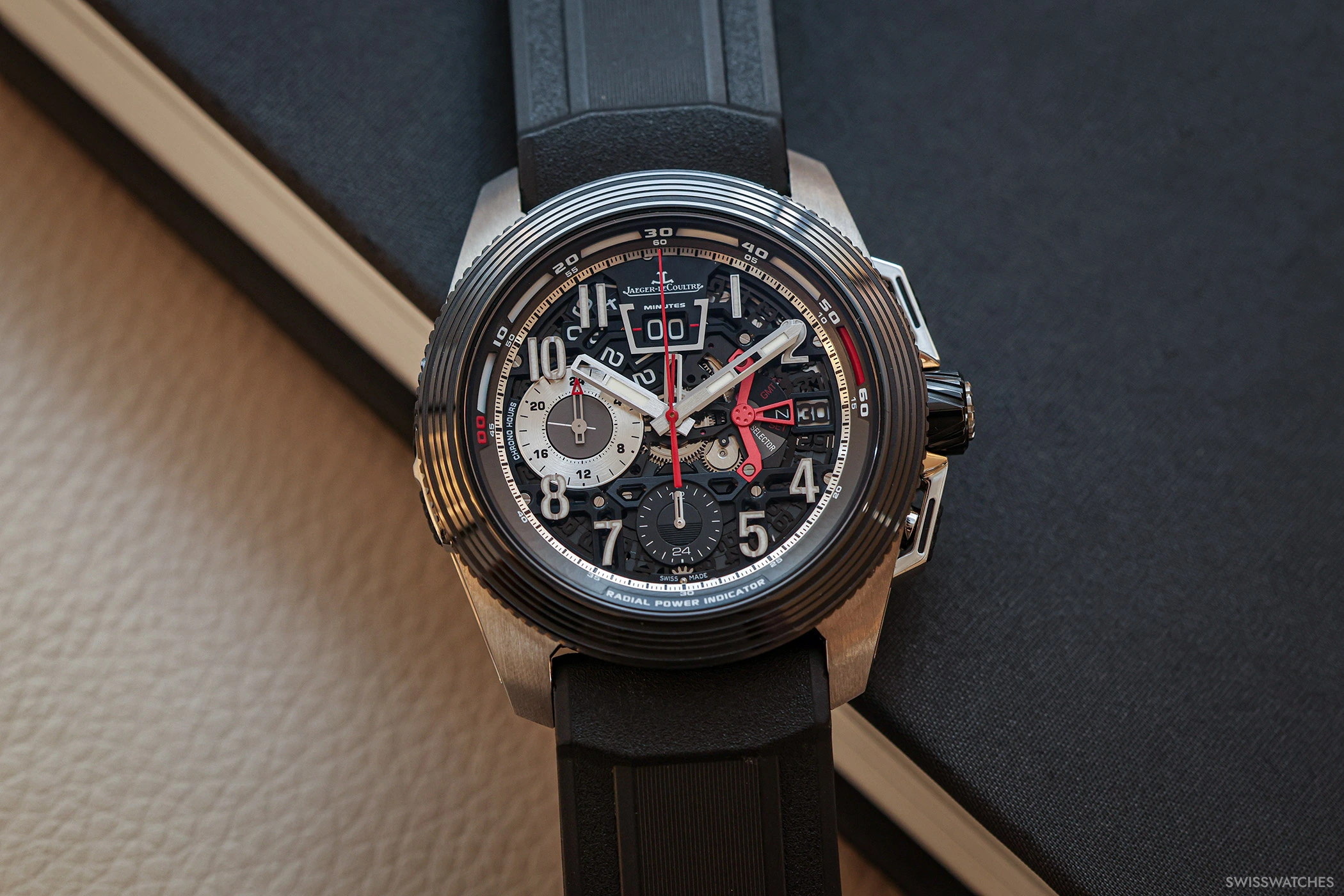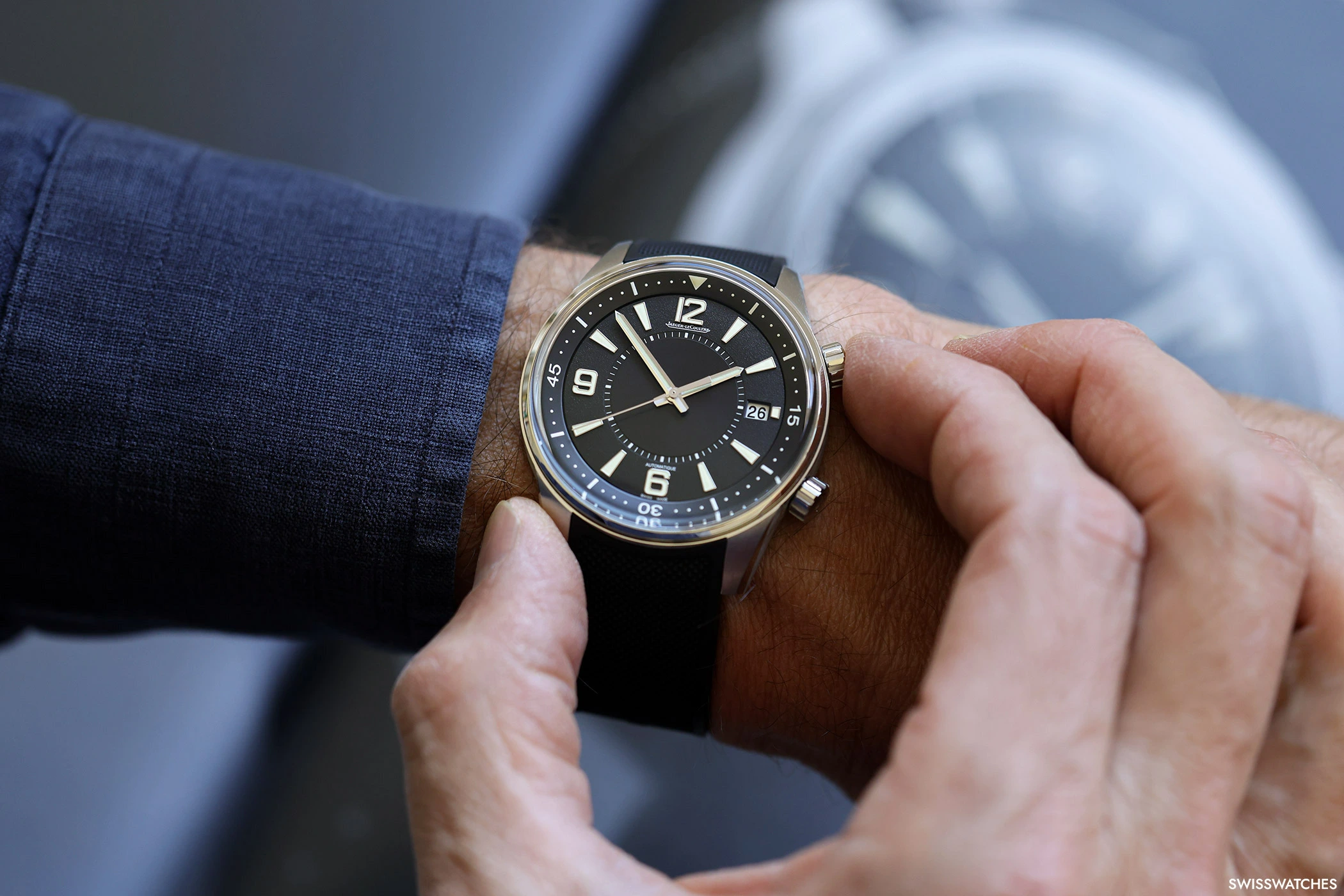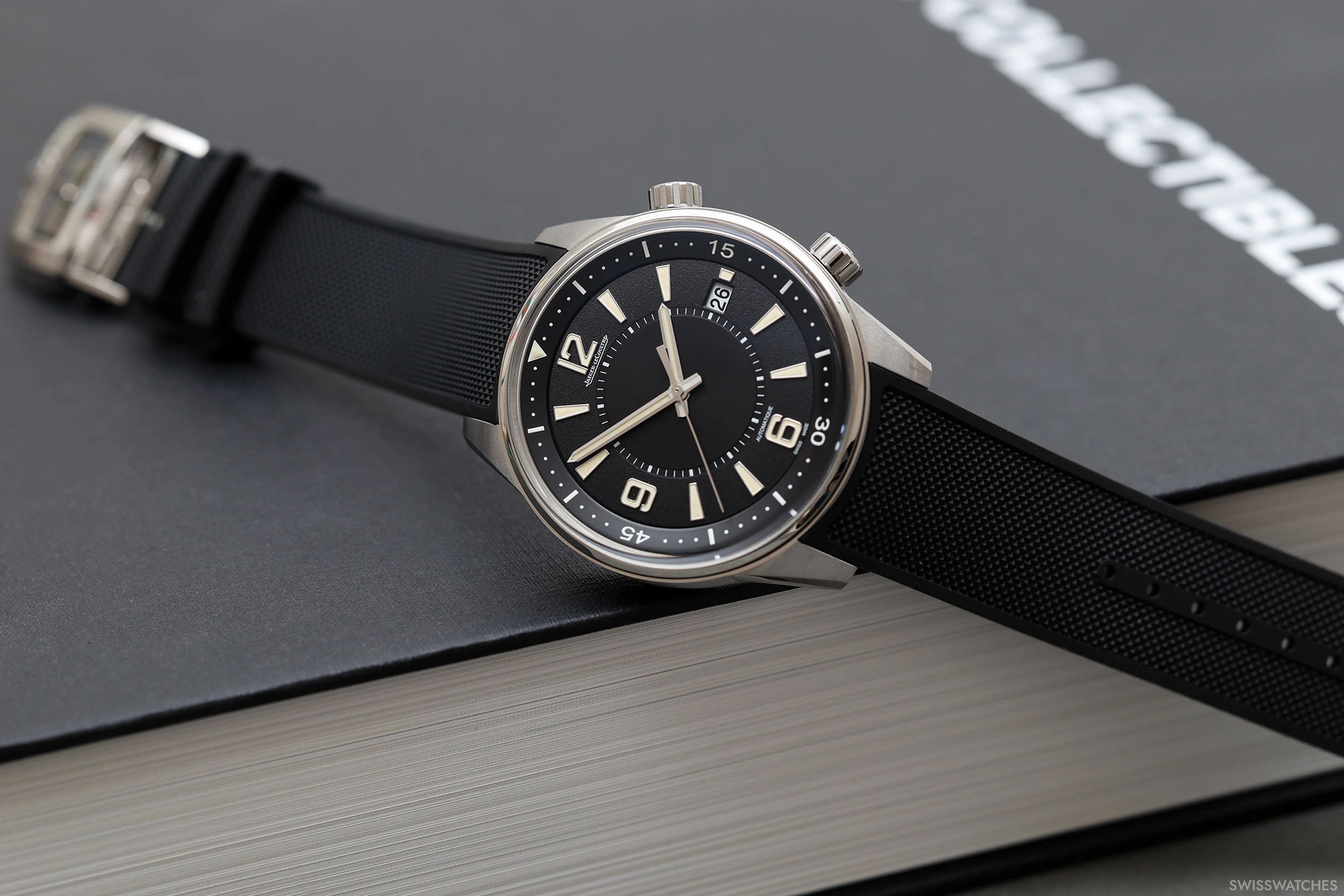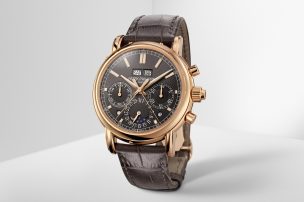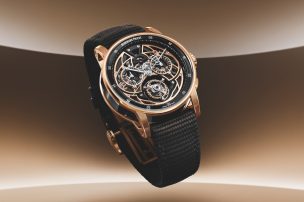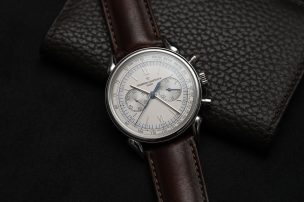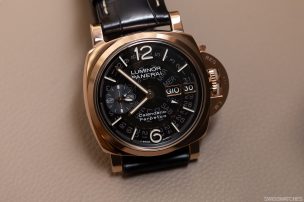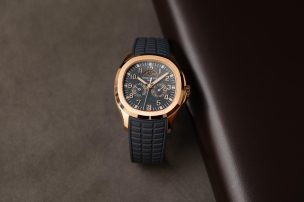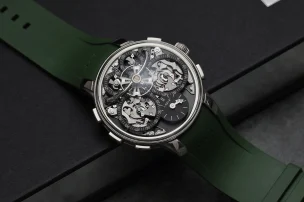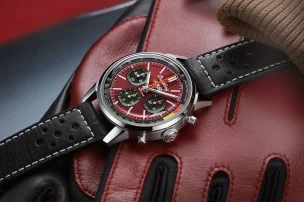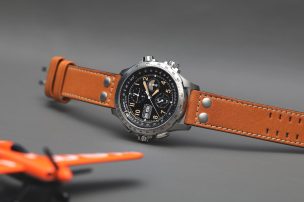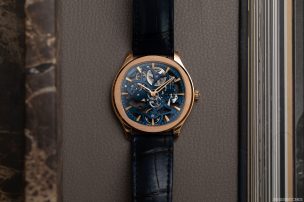
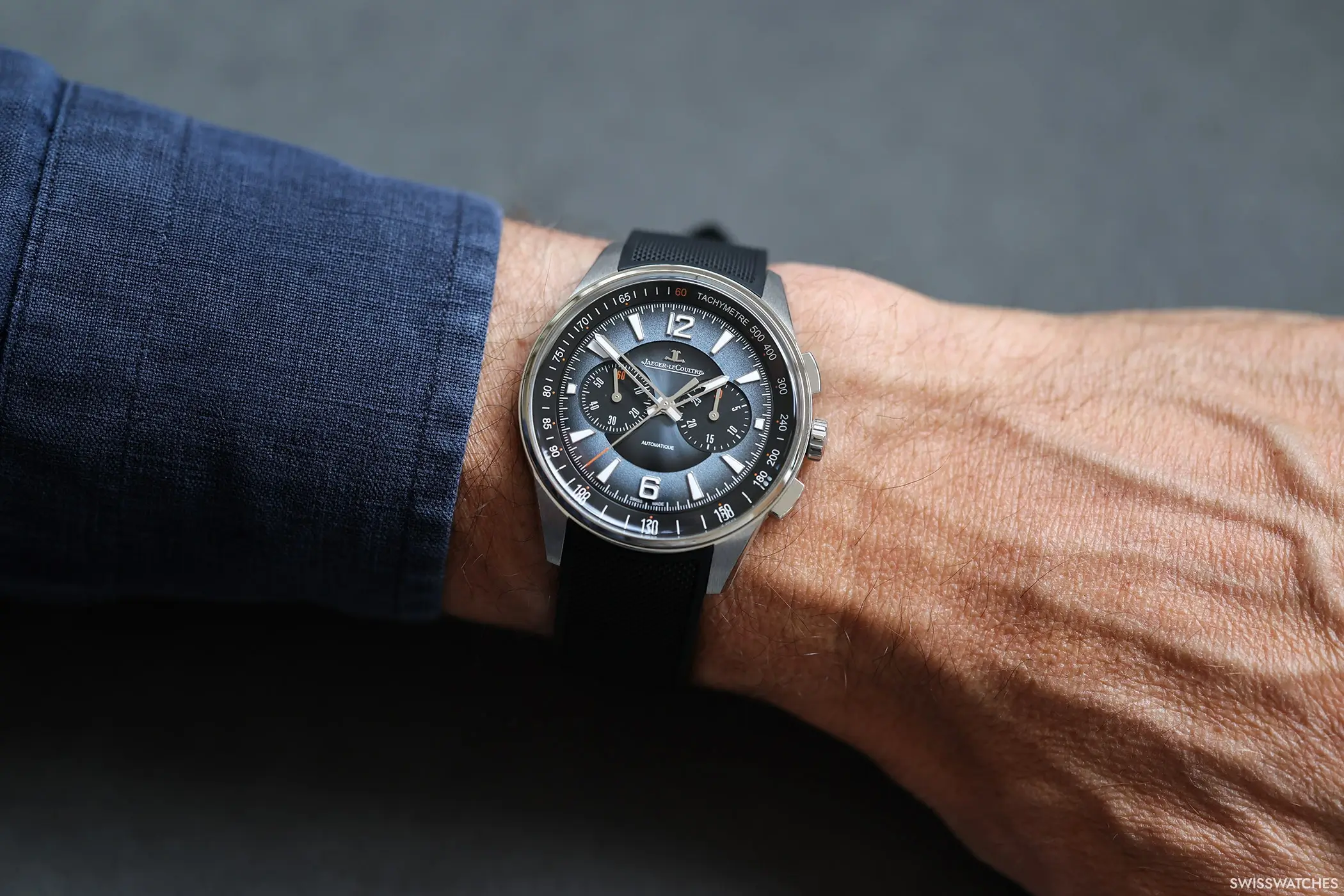
The Polaris Collection: Jaeger-LeCoultre’s Path to the Tool Watch
A good reputation is easily lost, but takes far longer to build. So when Jaeger-LeCoultre is often – and fondly – referred to today as the ‘watchmaker of watchmakers’, it may sound like a well-worn phrase, yet there are countless reasons and decades of history behind it. The current Polaris collection, including recent additions such as the newly launched Polaris Chronograph with its lacquered dial in a new ‘Ocean Grey’ shade, provides more than a few.
Let’s begin with the obvious: this timepiece is highly appealing and the dial’s gradient alone draws the eye time and again. But a closer look at the watch and its story reveals that many decades of continual refinement have led to what this model and its siblings represent today: arguably it embodies the sportiest access to the world of Jaeger-LeCoultre, while still retaining its signature elegance. To understand how this model came to be, it’s worth having a look at the past.
The Highlights of the Polaris Line: Date, Chronograph, and Perpetual Calendar
The Polaris Collection: From Time-Only Models to Perpetual Calendars
The original reference often cited for today’s Polaris collection is the Memovox Polaris from 1968 – a historic diver’s watch with an alarm function. However, Jaeger-LeCoultre’s tradition of robust, sporty timepieces stretches back much further. It is a lineage well worth exploring in greater detail.
What is certain is that the Polaris collection, as collectors know it today, was introduced in 2018. At that time, alongside a three-hand model (powered by calibre 898/1), a chronograph (calibre 751), and a chronograph with world-time function (calibre 752), the collection also included a date version (calibre 899) and a Memovox variant with an alarm complication. The latter was driven by calibre 956, which had previously featured in the Memovox Tribute to Polaris, a 2008 limited edition inspired by the original model.
Since then, the name ‘Polaris’ has firmly established itself alongside Jaeger-LeCoultre’s most iconic creation, Reverso. The collection has also grown to include, among others, a Geophysic variant featuring a second time zone and power reserve display (calibre 939), as well as a Perpetual Calendar (powered by the newly developed calibre 868AA), available in both stainless steel and rose gold.
The defining features of today’s Polaris models include, first, bold hour markers that ensure excellent legibility. Second, impeccably finished cases that skillfully alternate between brushed and polished surfaces. Third, subtle vintage accents, such as the numeral design of the Polaris Date. nd fourth – perhaps most notably – dials with exceptional gradient finishes. This signature look also defines the latest version of the chronograph, with its new ‘Ocean Grey’ lacquered dial. No fewer than 35 layers of lacquer are applied to achieve the desired effect on this 16,000 euros timepiece.
The style may already be familiar from the 2023 chronograph model with a lighter grey dial, available exclusively in Jaeger-LeCoultre boutiques (ref. Q902843J). Both models are powered by calibre 761, which replaced the calibre 751 used in the first Polaris chronographs from 2018. It features twin barrels, a column wheel with vertical clutch, a height of 5.76 mm, and a power reserve of approximately 65 hours. And that subdial at three o’clock, which counts just 30 minutes? Not a lot – but more than enough for a sprint, a deep-frozen pizza, or a quick game of hide and seek.
With a diameter of 42 millimetres, the Polaris Chronograph stands shoulder to shoulder with rivals such as the Omega Speedmaster Moonwatch Professional and the Rolex Daytona (although usually in 40mm diameter), and even surpasses the IWC Portugieser Chronograph or Zenith Chronomaster Sport by a millimetre – though this is barely noticeable on the wrist. Ultimately, while the Polaris Chronograph may well be the sportiest expression of a Jaeger-LeCoultre timepiece, it remains, above all, a watch for gentlemen – those who wish to impress with their choice of watch, without drawing overt attention. Especially with its dark grey dial, it achieves exactly that with quiet confidence.
Jaeger-LeCoultre and the Military
Dark dials are well known for making even larger watches appear smaller on the wrist, but more importantly, when combined with bright hour markers, they can offer excellent legibility. This has long been the hallmark of pilot’s watches, which is why it is no exaggeration to trace the lineage of the Polaris back to the 1940s. At that time, the British Ministry of Defence was seeking suppliers for service watches that had to meet particularly stringent specifications, ensuring that the soldiers and pilots of the Royal Air Force (RAF) and the Royal Australian Air Force (RAAF) were equipped with reliable timepieces.
It was during this period that Jaeger-LeCoultre produced military watches such as the Mark X and the Mark XI. The names sound familiar? That’s no coincidence. Jaeger-LeCoultre was by no means the only horological supplier to the Commonwealth at the time; in fact, around a dozen manufacturers – including Longines, Omega and Lemania – contributed to the production of the Mark X. The antimagnetic Mark XI, however, was entrusted to just two brands: Jaeger-LeCoultre and IWC. The specifications for the latter were significantly stricter, as it was designed specifically for pilots, while the Mark X was intended as a robust and dependable tool watch for ground personnel.
Since then, the Mark XI has come to be regarded as one of the most important pilot’s watches in the world. The expertise gained through its development would go on to inform Jaeger-LeCoultre’s creation of other professional tool watches – both in the air and underwater. The Geophysic model from 1958 also belongs to this lineage. It was powered by calibre 478, a movement developed thirteen years earlier and part of the same movement family as the calibre 488 used in the Mark XI. Designed as a high-precision watch for scientists, the Geophysic gained lasting fame when it was presented to the captain of the USS Nautilus, the first nuclear-powered submarine to navigate beneath the North Pole.
Jaeger-LeCoultre and the World of Dive Watches
The early 1950s saw the birth of some of the world’s most iconic dive watches – from the Rolex Submariner (1953) and Blancpain Fifty Fathoms (1953) to the Breitling Superocean (1957) and the Omega Seamaster (although launched in 1948, the 1957 version is more suited to the sports watch look). Diving was emerging as a recreational sport, and both professionals and amateurs alike were calling for a dedicated category of timepieces to accompany them beneath the surface.
Jaeger-LeCoultre recognised this growing demand and approached the subject with a unique perspective. As early as 1950, the brand had been producing alarm watches under the Memovox name, and in 1959 it adapted this technology for underwater use with the launch of the Memovox Deep Sea. Its high-frequency alarm was designed to audibly alert divers to elapsed dive time and the need to begin their ascent – a safety feature that set it apart from other dive watches of the era.
Following in the footsteps of this pioneering model came the Memovox Polaris, unveiled ten years later in 1968. Water-resistant to 200 metres, it offered an even louder alarm system. With a diameter of 42 millimetres – generous by the standards of the time – it ensured excellent legibility, essential for underwater use.
In 1970, the Memovox Polaris II succeeded the original. With its vivid blue dial, bulbous case and bold 1970s styling, it introduced an entirely new design language to the collection. It was powered by Jaeger-LeCoultre’s latest high-frequency automatic movement, the calibre 916. The rubber straps used on these early models still influence the design of today’s Polaris collection, where rubber and textile straps lend the watches a particularly strong wrist presence.
Jaeger-LeCoultre and Sports Watches
The genre of so-called ‘tool watches’ – a category of professional instruments still popular today – has always been approached somewhat differently at Jaeger-LeCoultre than by its competitors. Rather than ‘different’, one might even say ‘more refined’ – which, after all, is precisely what one would expect from a maison whose most iconic collection was born from the idea of creating a watch suitable for polo players.
Take, for instance, the Shark Deep Sea from 1969. It wasn’t merely a diver’s watch with chronograph functionality; it was delivered with additional interchangeable bezels featuring a telemeter scale and a world time indication. Beyond such traditional tool watches, Jaeger-LeCoultre went on to produce numerous models with a more overtly sporty aesthetic – timepieces that captured the spirit of their era with particular elegance. Among them were the Memovox Snowdrop and the Memovox Speed Beat GT (both from 1972), the latter bearing the ‘GT’ label not in reference to the automotive Gran Turismo, but rather Grande Taille, referring to its case dimensions of 46 x 39 millimetres.
Jaeger-LeCoultre and the Spirit of the Times
Every watch brand cultivates its own distinct style, which encompasses not only its design language but also the values and corporate culture unique to each maison. The challenge lies in preserving this identity through shifting trends and cultural movements, while simultaneously remaining contemporary – in both thought and production. As deeply rooted in tradition as both the craft of watchmaking and Jaeger-LeCoultre itself may be, the maison continues to show a remarkable willingness to reinterpret that tradition in ever-evolving ways.
Whether through watches with a grande taille and strong design affinity in the 1970s, or the more conceptual, technically innovative sports watches of the early 2000s, Jaeger-LeCoultre has consistently demonstrated its ability to embrace change. At the time, the company was led by a young executive named Jérôme Lambert – who, incidentally, is once again at the helm today. One of his earliest models was the Master Compressor Memovox, introduced in 2002.
The aim back then was to firmly establish Jaeger-LeCoultre as an independent brand; a maison that, despite traditionally producing extensively for other manufacturers and having weathered the quartz crisis with considerable effort, sought a stronger individual identity. The compressor crown system on this model enhanced its water resistance, and the watch itself should be understood as a thoroughly modern timepiece, deliberately avoiding any nods to historical models.
It was followed by technically even more radical watches such as the Master Compressor Extreme Lab 1 from 2007, featuring a silicon escapement wheel and a lubricant-free movement, and the Master Compressor Extreme Lab 2 (2009), which added a GMT function and power reserve indicator to the mix.
Jaeger-LeCoultre and Elegance
We live in a world where brand recognition holds enormous value. The desirability of watches such as the Rolex Daytona or the Audemars Piguet Royal Oak is proof of that. As of 2025, the Polaris Chronograph has not yet reached that level of global recognition.
But one need not be a devotee of ‘stealth luxury’ to appreciate this model – or, indeed, any of the others in the Polaris collection. These watches are born of a maison that has accompanied and shaped the world of watchmaking in countless ways since 1833. The name Polaris itself carries a legacy spanning decades. And watches such as the Polaris Chronograph strike a remarkable balance: they unite finely crafted calibres with a design language that, at first glance, appears understated and restrained – yet reveals its finesse in the depth and detail of the dial execution.
This sense of clarity runs through the entire collection. Colours are never flashy, yet always rich and nuanced. The material of choice is typically stainless steel – a deliberate contrast to the overall elegance of the watches, which may still be described as ‘tool watches’ but in truth have come to define a category of their own: sports watches that make no claim to serve professional divers or extreme adventurers, but instead appeal to men and women who value a subtle interplay of elegance and dynamism in everyday life.
And so the purists among tool-watch enthusiasts may continue to debate whether precious metals or complications like a perpetual calendar are compatible with the essence of a traditional field watch. A Polaris seeks no comparison; it impresses on its own terms.
